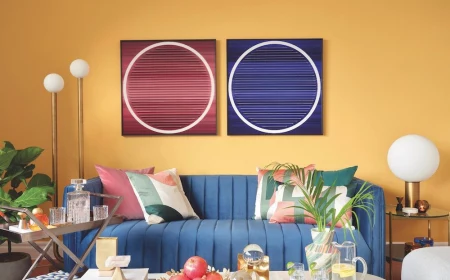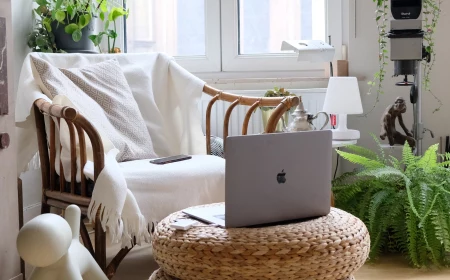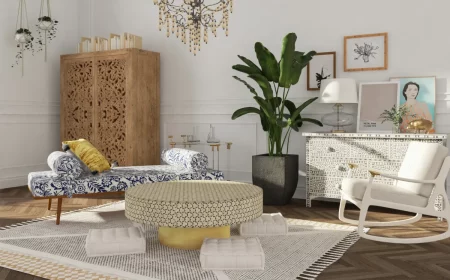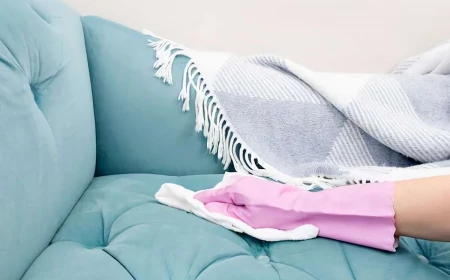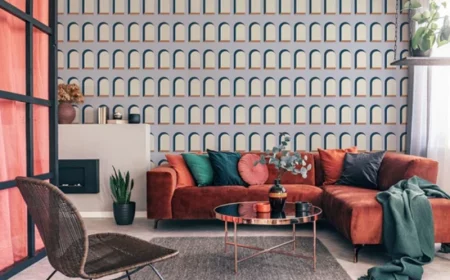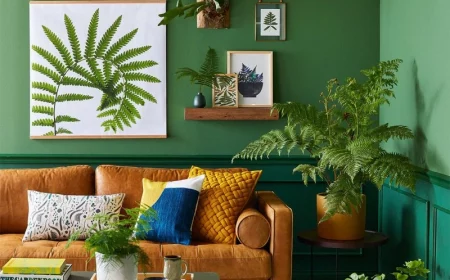How to Get the Modern Farmhouse Living Room Right (Without It Looking Fake)
I’ve been in the home design and building world for a long time, and I’ve seen countless styles cycle in and out of fashion. But some looks just have a different kind of staying power. The modern farmhouse vibe is definitely one of them. And it’s not just about what’s popular on TV; it’s a real shift back to what matters: comfort, practicality, and beautiful, honest materials.
In this article
A genuine modern farmhouse living room is so much more than a bit of shiplap and a sliding barn door. It’s a feeling you get the moment you step inside. It should feel bright, durable, and just plain welcoming—a space designed for real life, not just for show. Getting this right means going beyond just picking out decor. It all starts with the basics: the structure, the materials, and the finishes. Honestly, this isn’t about building a theme-park version of country living. It’s about creating a room with some soul.
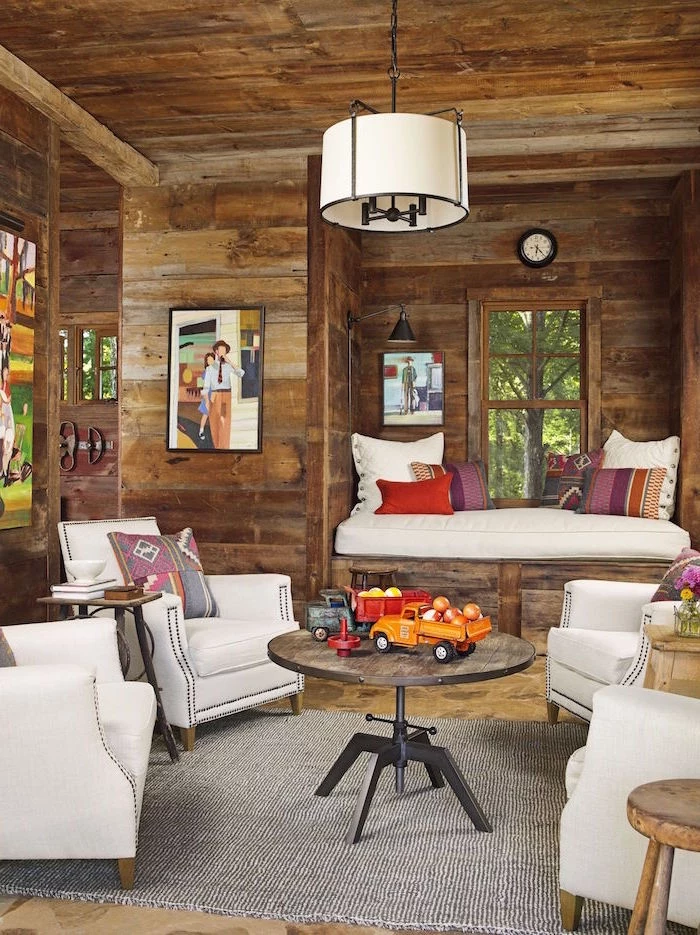
First Things First: It’s All About Light and Honesty
So many people jump straight to asking what they should buy. But the real starting point is thinking about the why. The original farmhouses were shaped by necessity. They used whatever local materials were on hand, were designed to capture as much natural light as possible (electricity was a big deal!), and always had open areas for the family to gather. The modern take on this style hangs onto those core values.
Let There Be Light
That “light and airy” feeling you’re after? It’s not magic, it’s just about how light works in a room. We talk about a paint’s Light Reflectance Value, or LRV, which is just a scale from 0 (pitch black) to 100 (pure white). A paint with a high LRV—say, over 80—is going to bounce most of the light around the room. A darker color with a low LRV will just soak it up, making the space feel smaller. This is exactly why whites, off-whites, and soft grays are the go-to choices. It’s a practical move to make your room feel bigger and more energetic, using the light you already have.
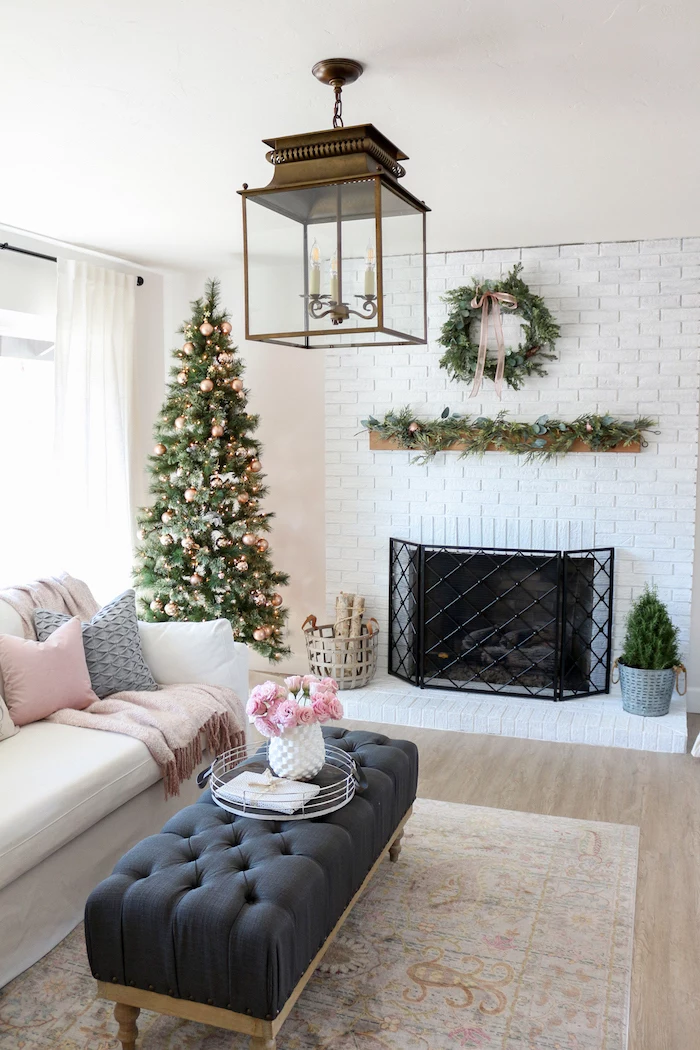
Keep Your Materials Real
This style is all about letting materials be themselves. Wood should look like wood, with all its grain and character. Stone should have texture. Metal should show its age a bit. It’s a move away from things pretending to be something they’re not. This doesn’t mean everything has to be super rustic or reclaimed. It just means that if you choose wood, let its natural beauty be the star. That honesty is what gives a room a sense of authenticity and weight that you just can’t get from shiny veneers.
Get the Bones of the Room Right
Before you even dream about a sofa or a throw pillow, you have to get the room’s foundation right. The walls, ceilings, and floors are a huge pain (and expense) to change later. I’ve seen it happen: clients spend a fortune on beautiful furniture, but the room still feels off because the basics were an afterthought.
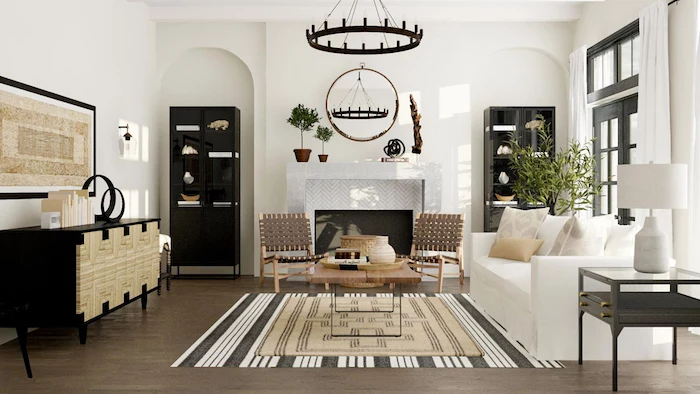
Walls: Beyond Shiplap
Shiplap has become the poster child for this look, but you have to use it smartly. Originally, it was just simple, effective siding for the outside of buildings.
- Material Matters: You’ve got options here. Real wood, like a #2 grade pine, gives you authentic knots and texture, but be warned—it can expand and shrink with humidity. A good pine shiplap might run you between $3 and $5 per square foot. For a more stable surface that’s perfect for painting, MDF (Medium-Density Fiberboard) shiplap is a fantastic choice. You can find it at places like Home Depot or Lowe’s, it gives you perfectly crisp lines, and it’s often a bit cheaper, around $2 to $4 per square foot.
- Installation Tip: The gap between the boards is key. A “nickel gap,” where you literally use a nickel as a spacer, is the classic look. Always use a nail gun to secure the boards to the wall studs. Please, don’t just glue it to the drywall! It will fail over time. Oh, and a quick pro tip: plan your layout from the center out so you don’t end up with a weird, skinny little board at the top or bottom. A project like an accent wall can take a full weekend if you’re new to it, so plan accordingly.
- Heads up! I once had to fix a DIY job where shiplap was put up in a basement with moisture issues. The real wood boards swelled up and buckled into a total mess. Always fix any moisture problems first, or just opt for MDF in rooms where the humidity fluctuates.

Ceilings: The Impact of Beams
Exposed beams can completely change the character of a room, but this is one area where you really shouldn’t wing it.
- Real vs. Faux: Real structural beams are the ones holding up your house. Messing with those requires a structural engineer, period. It’s a major renovation. For most of us, decorative or “faux” beams are the way to go.
- Faux Beam Options: Don’t scoff—high-quality faux beams look incredible these days. You can get hollow box beams made from lightweight woods like alder or cedar, which makes them way easier to mount to your ceiling joists. There are also amazing high-density polyurethane beams molded from real wood. They’re lightweight, realistic, and won’t warp or crack. You can find some great options from specialty online retailers.
- Sourcing and Finishing: If you go for authentic reclaimed timber, it has a story you just can’t fake. The old nail holes and rich color are incredible. To finish them, all you usually need is a good cleaning and a clear matte sealer to protect the wood without making it look plasticky. For new wood, you can age it by running a wire brush over it to open up the grain before you stain it.
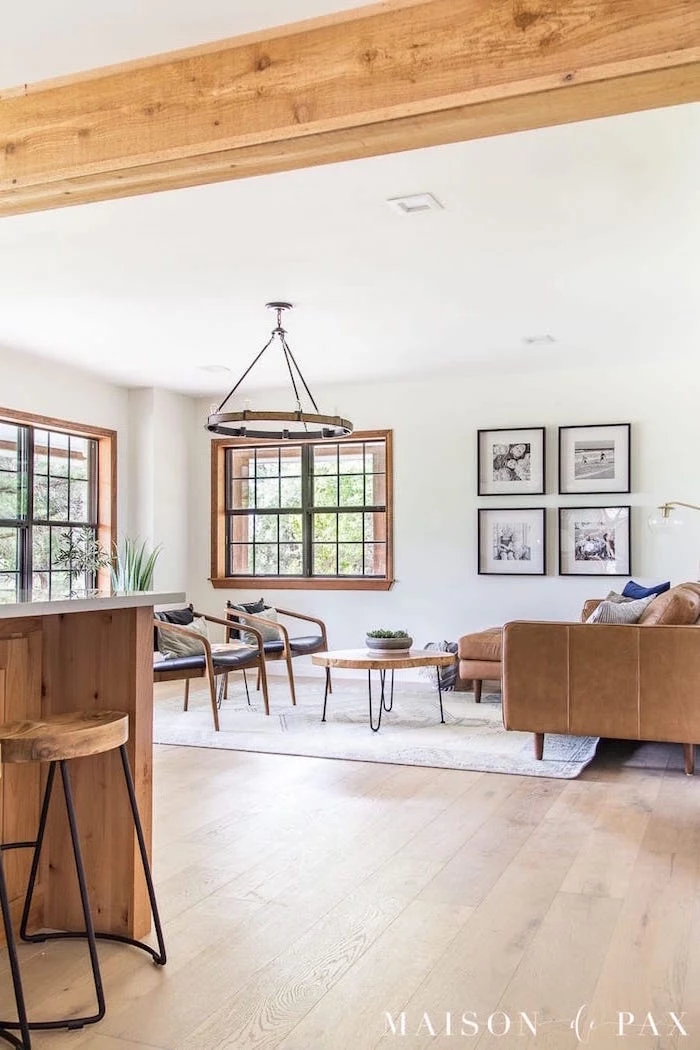
Floors: The Foundation You Walk On
Wide-plank wood flooring is the gold standard here. It creates such a warm, natural base for everything else.
- Wood Choices: White oak is my top pick. It’s tough, durable, and takes stain really well. Hickory is even harder, but its grain is a lot busier. Pine is softer and will definitely show dings and scratches over time—which, by the way, some people love for that “lived-in” look.
- Solid vs. Engineered vs. LVP: This is a big decision. Solid hardwood is amazing; it can be sanded and refinished for generations. But in basements or places with big temperature swings, engineered hardwood is more stable. If you go that route, look for a thick wear layer (at least 3mm). But let’s be honest, if solid hardwood isn’t in the budget, you should seriously look at Luxury Vinyl Plank (LVP). The new stuff has incredibly realistic wood textures, is 100% waterproof (perfect for homes with kids or pets), and is way easier to install yourself. It’s a total game-changer.
- The Right Finish: Go for a matte or satin finish on your floors. High-gloss shows every single footprint and speck of dust. A modern matte polyurethane gives you great durability without that shiny, plastic look, letting the wood’s natural texture come through.
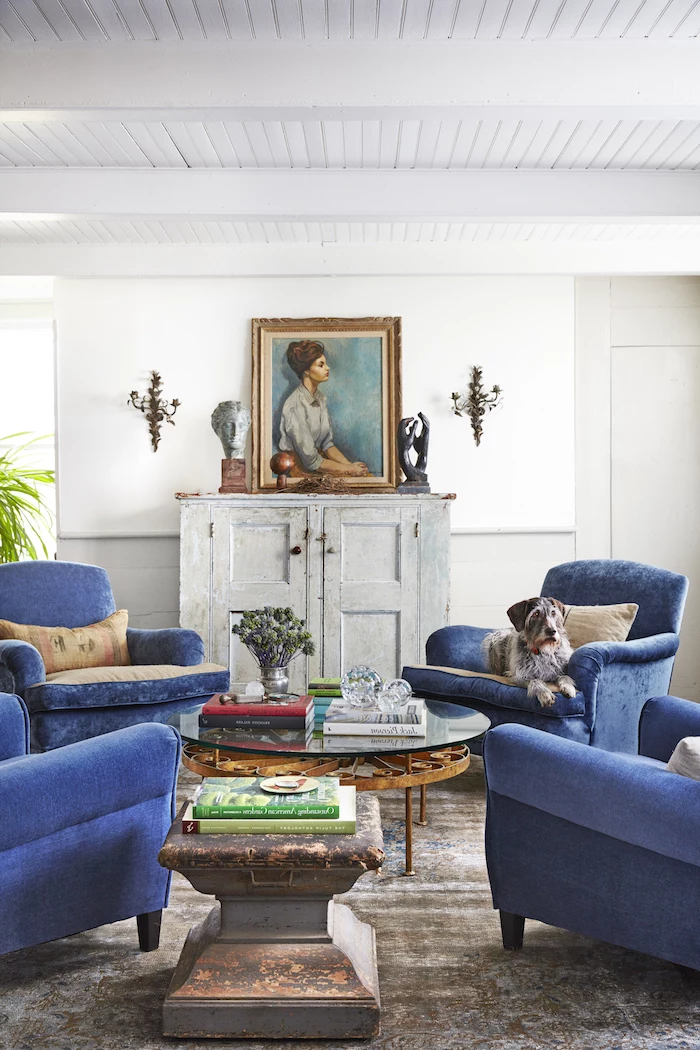
The Hearth: The Heart of the Home
The fireplace is the natural gathering spot, and in a modern farmhouse, it should feel substantial and real.
- Brick and Stone: Instead of standard red brick, try a German schmear. That’s a technique where you smear wet mortar over the brick face and then wipe some of it off, creating a rustic, textured finish. Whitewashing is another great option for a cleaner feel. Stacked stone veneer gives you the look of a solid stone fireplace without the crazy cost and weight.
- The Mantel: A thick, reclaimed wood beam is a classic choice for a mantelpiece. Just make sure it’s installed with safe clearance from the firebox. I’ve seen too many mantels set too low, which is a serious fire hazard. Always follow standard fire safety codes, which specify how high the mantel needs to be based on how far it sticks out.
- Get the Look for Less: Can’t afford a full fireplace renovation? A fantastic weekend project is to simply paint your existing brick fireplace white, charcoal, or black and then install a chunky wood mantel above it. You can totally transform the look of your room for under $200.
And my most important piece of advice: Any work involving a fireplace—gas inserts, chimney alterations, you name it—requires a licensed pro. Seriously. Gas lines and proper ventilation are not things to experiment with. It’s a non-negotiable for safety.
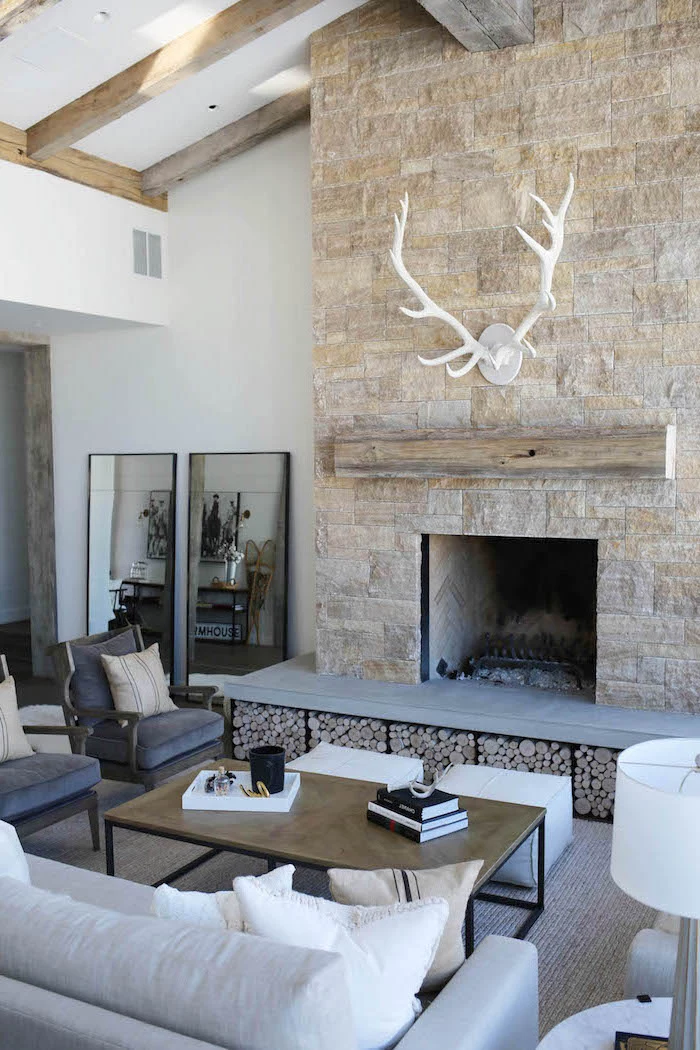
Furnishings: The Art of a Comfortable Mix
Now for the fun part. With a strong foundation in place, furnishing is about creating comfort and balance. The goal is a curated room, not a cluttered one.
- Mix, Don’t Match: Please, step away from the matching five-piece living room set. It instantly makes a room feel impersonal. The real secret is to mix textures and shapes while keeping your color palette tight.
- Start with an Anchor: Begin with a big, comfy sofa. A slipcovered one in a light, durable fabric like a cotton canvas is a brilliant choice. It’s forgiving, and you can just wash the slipcover.
- Add Contrast: Pair that soft sofa with chairs that bring a different material into the mix. Think a couple of classic leather club chairs or armchairs with simple wood frames. Contrast is key.
- A Pro Tip on Scale: This is where I see a lot of mistakes. People buy giant, overstuffed furniture that completely eats the room. Before you buy anything, use painter’s tape on the floor to mark out the footprint of the sofa or chair. Better yet? Use cardboard boxes to mock up the 3D volume. It really helps you feel how a piece will fill the space before you drop thousands on something that’s way too big.
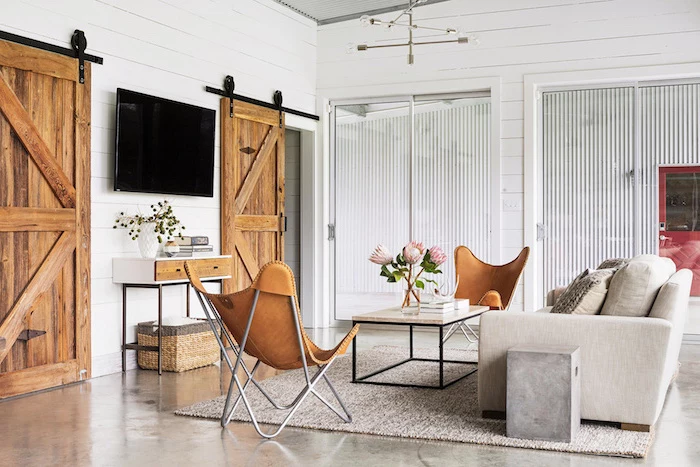
Layering with Textiles
Fabrics are what make a space feel soft and inviting. My advice? Stick with natural fibers.
- Rugs: A large, neutral rug is perfect for defining your seating area. Jute or sisal rugs add amazing texture, but they aren’t the softest. A great trick is to layer a smaller, softer wool or cotton rug right on top of the jute one. You get texture and softness.
- Pillows and Throws: This is your chance to bring in subtle patterns and color. Think chunky knit throws, simple striped linen pillows, or maybe a touch of faux fur for texture. A few well-chosen pillows always look better than a dozen random ones.
Lighting, Windows, and Doors
These are the final touches that control the mood and connect your room to the outside world.
Good Lighting is Layered
You need three layers of light for a room to feel right. And put EVERYTHING on a dimmer switch. It’s the single best way to control the mood.
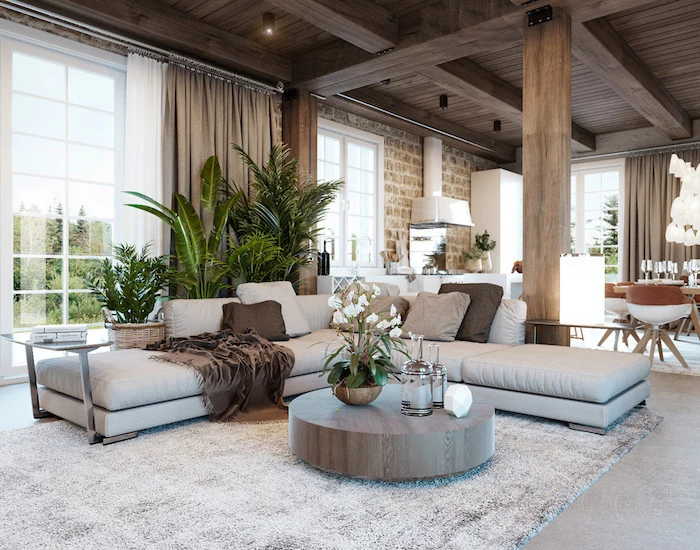
- Ambient: This is your overall light. A large, simple chandelier in wrought iron or with wood beads works perfectly.
- Task: This is focused light for things like reading. A floor lamp by a chair or table lamps on end tables are a must.
- Accent: This is for highlighting things you love, like artwork or the fireplace.
Quick tip on light bulbs: Stick to a warm white, somewhere between 2700K and 3000K. Think of the warm, golden glow of a sunset, not the harsh, blue-ish light of a hospital. That’s the secret to making a room feel cozy.
Windows and Doors
Black-framed windows are a signature of this style for a reason. They act like picture frames for your view and create a sharp, graphic contrast against light walls. For window treatments, keep it simple. Unlined linen curtains that just touch the floor or woven wood shades are great choices.
The Truth About Barn Doors
Okay, let’s talk barn doors. They can look great, but they have major limitations. Trust me on this one, I’ve had clients regret using them in the wrong place. They are an aesthetic choice, not a practical one for privacy.
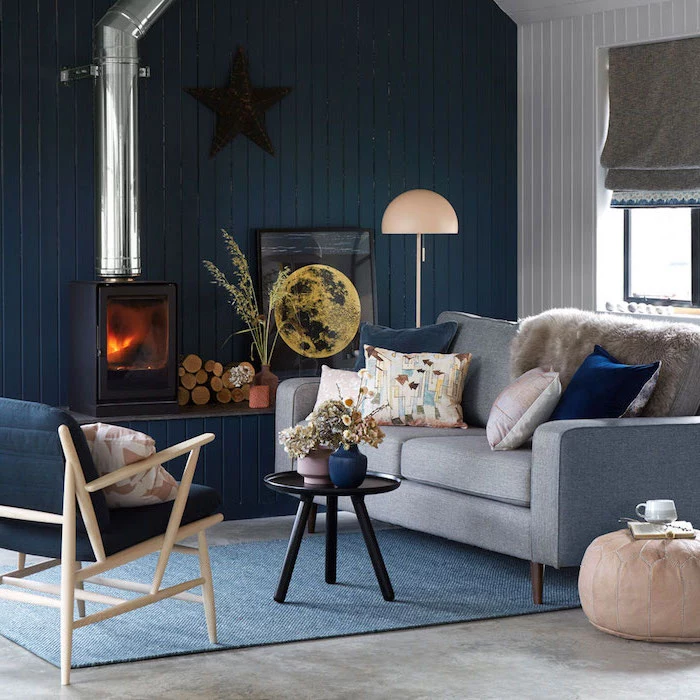
- When to use them: They’re perfect for a pantry, home office, or a closet where sound and light don’t really matter.
- When to avoid them: I strongly advise against using them for a bedroom or, especially, a bathroom. They do not seal. There will be gaps, and sound and light will travel right through. A barn door on a main bathroom offers about as much privacy as a beaded curtain. Not ideal!
- Hardware is a Safety Issue: If you do use one, don’t cheap out on the hardware. A heavy door needs a high-quality steel track rated for its weight, and that track must be mounted to solid blocking in the wall. I’ve seen doors fall off their tracks. Spend the money on good hardware—it’s cheaper than a hospital bill.
When to DIY and When to Call a Pro
I’m all for rolling up your sleeves, but you have to know your limits.
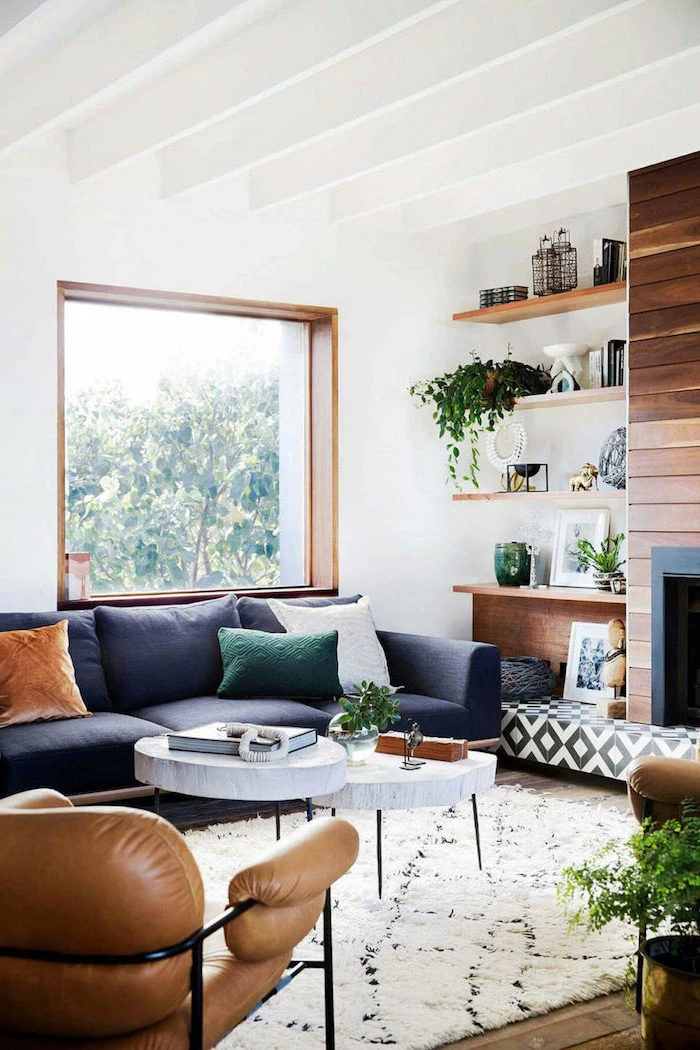
- Great DIY Projects: Painting, assembling furniture, hanging curtains, and even installing a simple accent wall if you’re handy.
- Hire a Licensed Pro For: Any structural work (like installing beams), all electrical and plumbing/gas work, hardwood floor installation, and complex stonework.
Trying to save a few bucks on a complex job can lead to dangerous situations and costly mistakes. A good pro is an investment in your home’s safety and value.
Creating an authentic modern farmhouse living room is really a thoughtful process. It’s about blending old with new, comfort with clean lines, and above all, creating a welcoming heart for your home that will stand the test of time.
Inspirational Gallery
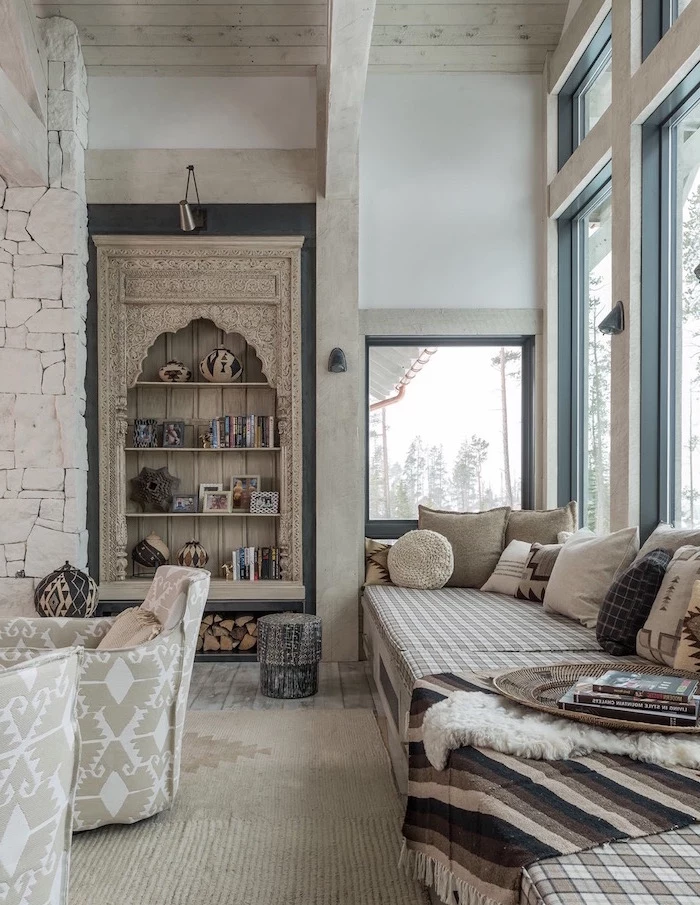
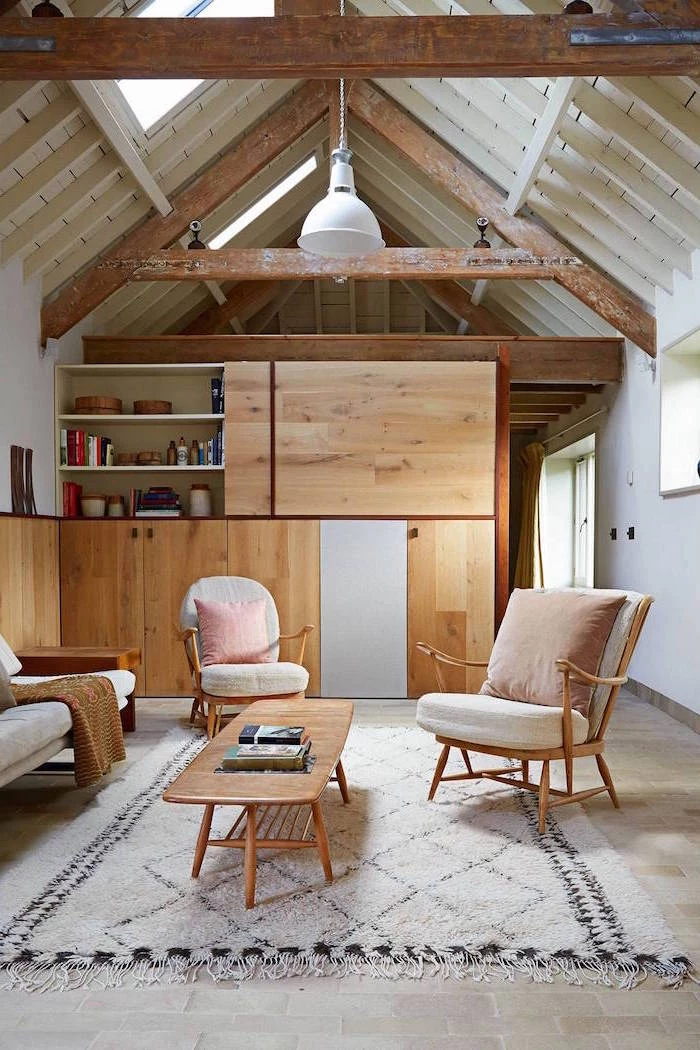
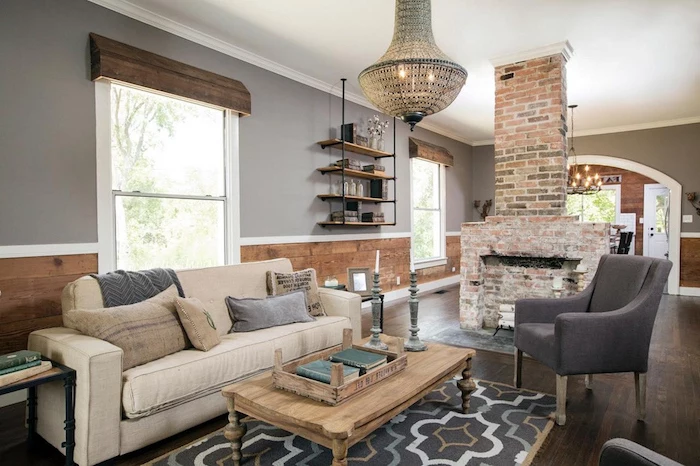
The ‘cozy’ factor in a modern farmhouse living room often comes down to textiles. Don’t just toss a few generic pillows on the sofa. Think in layers: a chunky knit throw from a brand like Boll & Branch, linen-blend pillow covers, and perhaps a soft, worn-in-looking cotton rug layered over a larger jute or sisal one. Texture is king here; it adds visual weight and warmth without clutter.
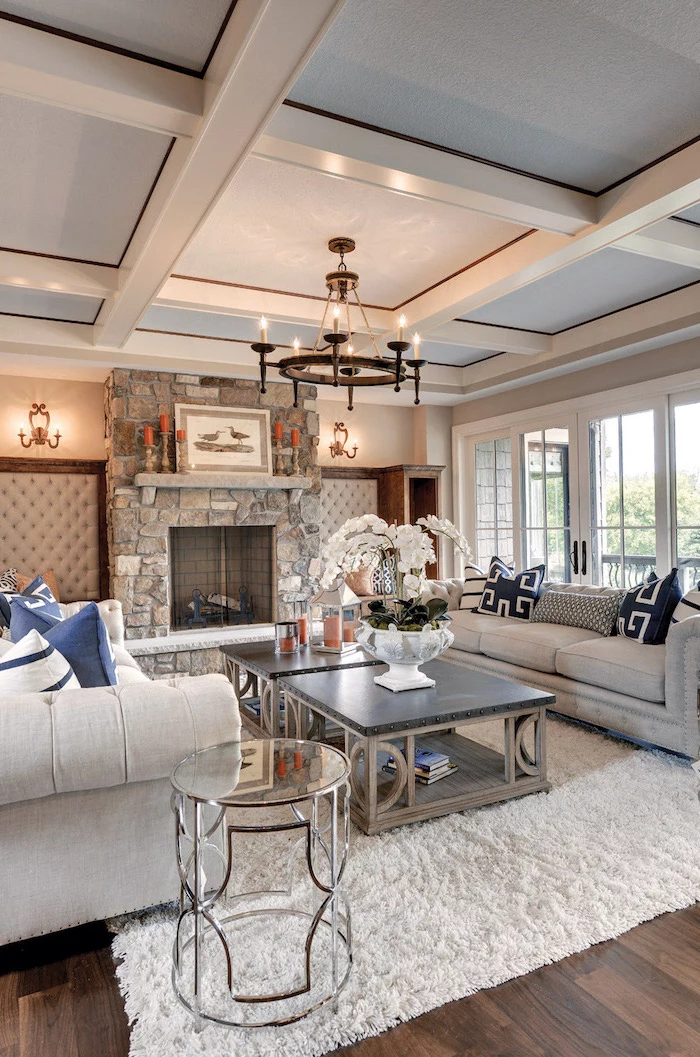
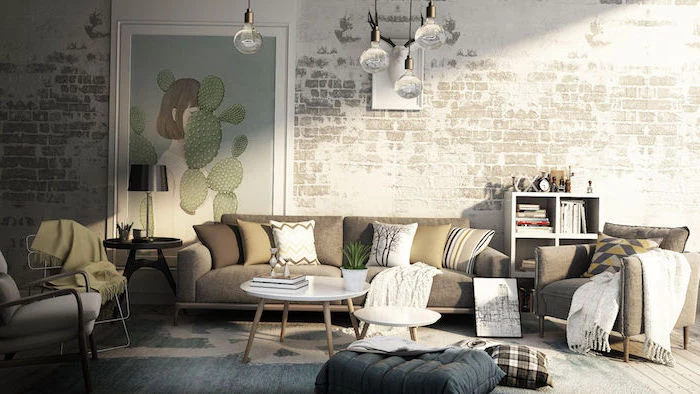
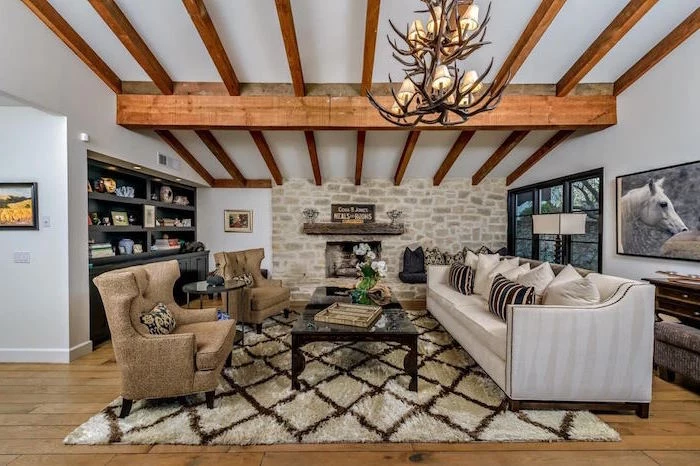
- Start with a dominant metal, usually matte black for fixtures and hardware, to ground the space.
- Add a warmer accent metal, like aged brass or copper, in smaller doses—think picture frames or a decorative bowl.
- Avoid anything too shiny. The goal is a lived-in, not a brand-new, polished look.
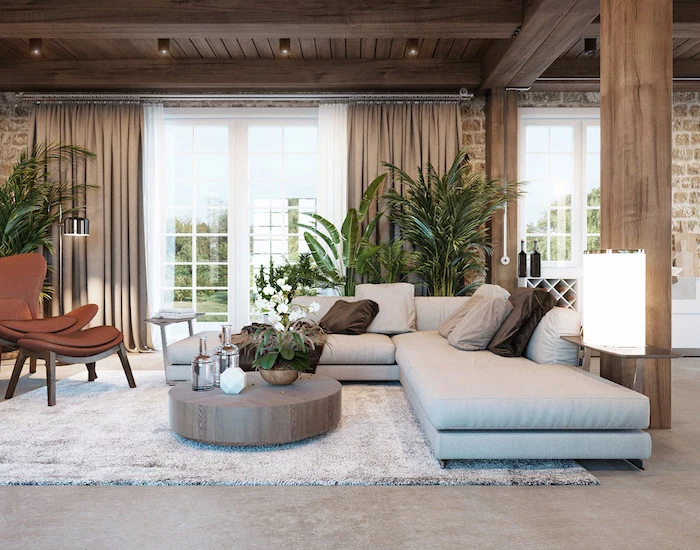
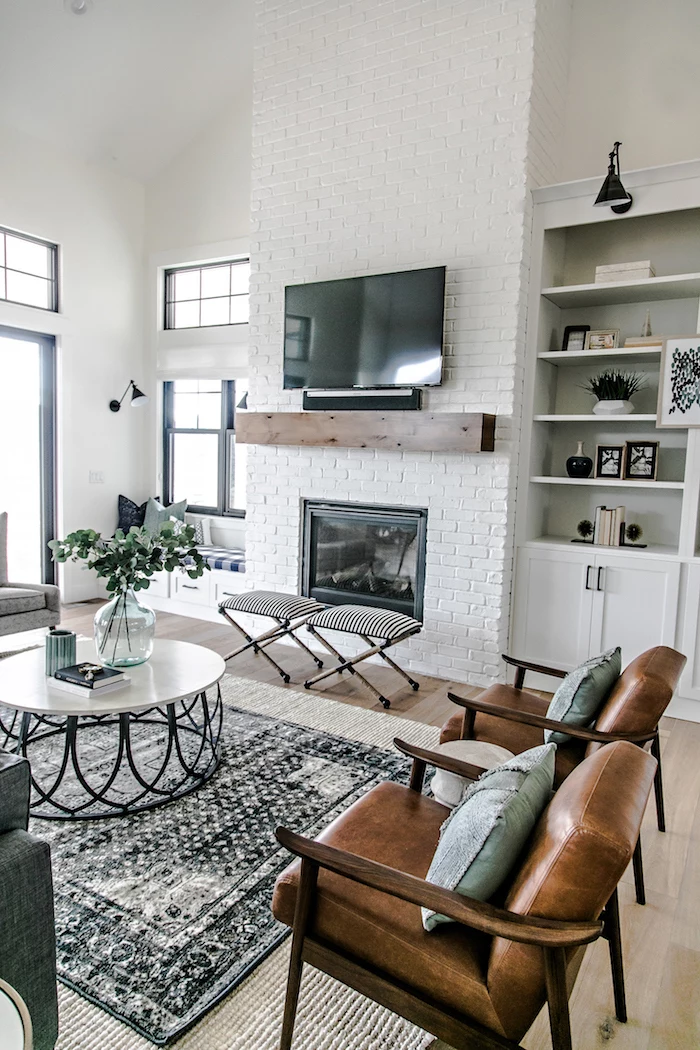
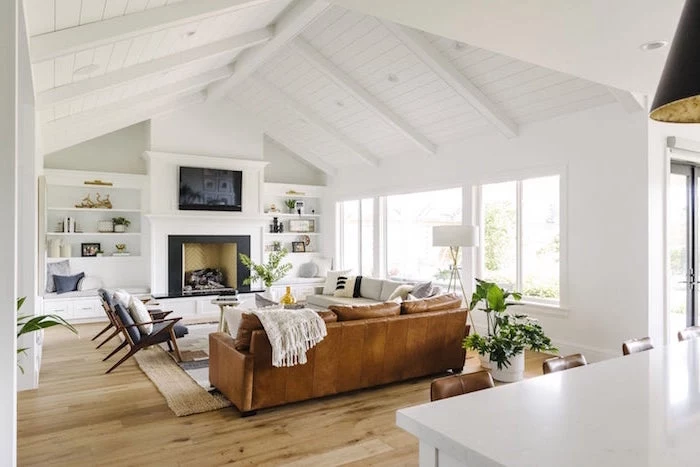
The modern update to the classic fireplace: Forget the ornate mantel. Today’s modern farmhouse look often features a simple, clean-lined fireplace surround. Think a ‘German schmear’ technique over old brick for a rustic-yet-clean texture, or a simple boxy frame made from reclaimed wood or even smooth concrete for an industrial edge.
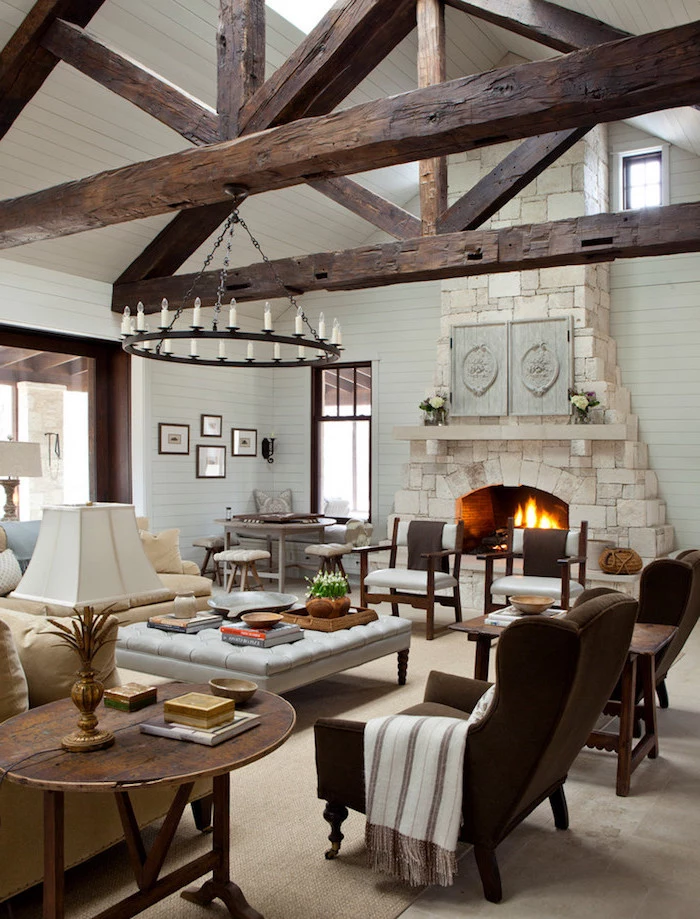
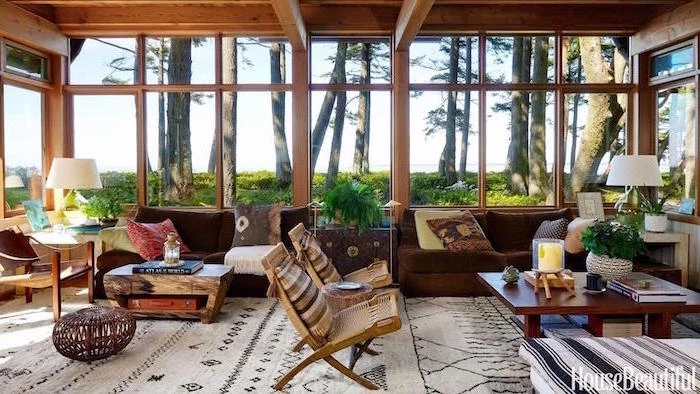

‘Authenticity is the new luxury.’ In a farmhouse context, this means favoring solid wood over laminate, real leather that will patina over time, and hand-thrown pottery instead of mass-produced decor.
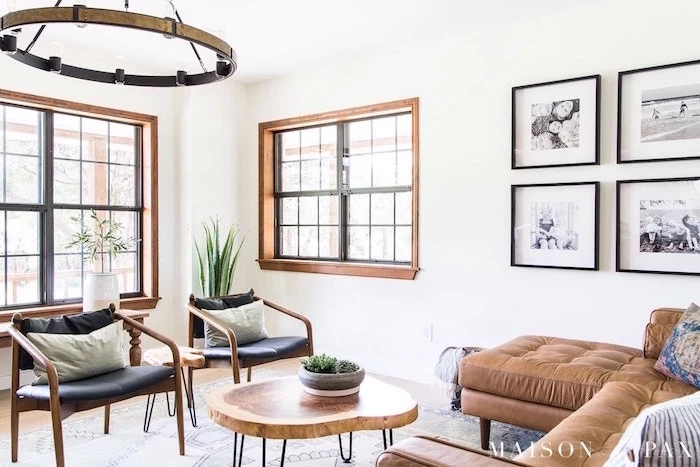
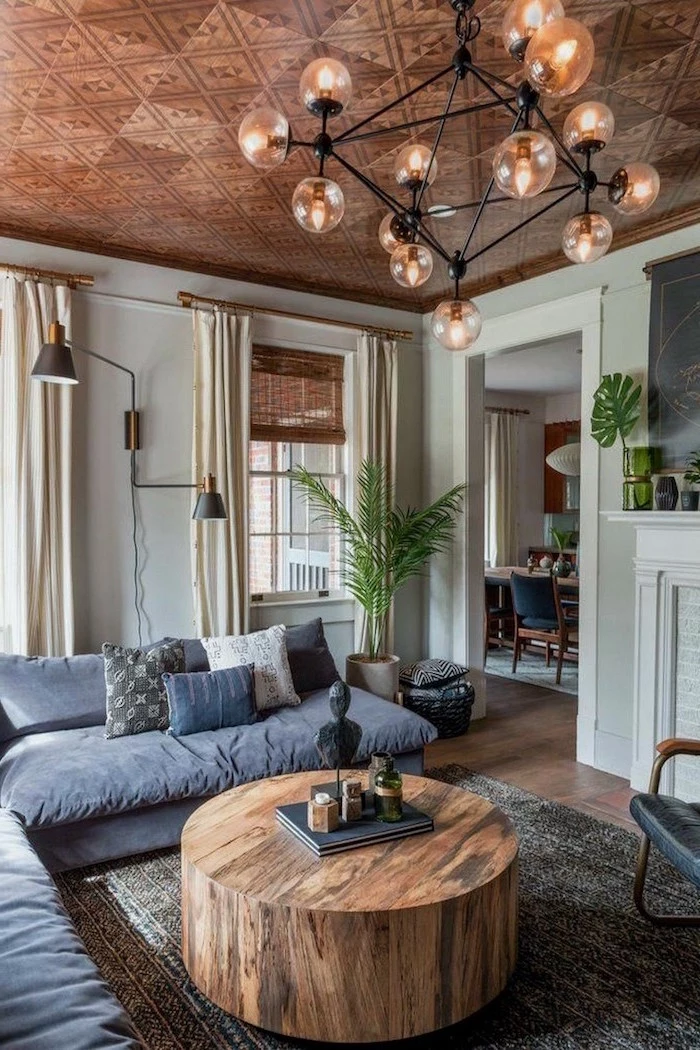

Window treatments should feel functional, not fussy. The goal is to control light without blocking it entirely. Consider these authentic options:
- Woven wood or bamboo shades for natural texture and filtered light.
- Simple, unlined linen or cotton curtain panels hung from a plain iron rod.
- Classic plantation shutters, painted to match the trim for a seamless look.
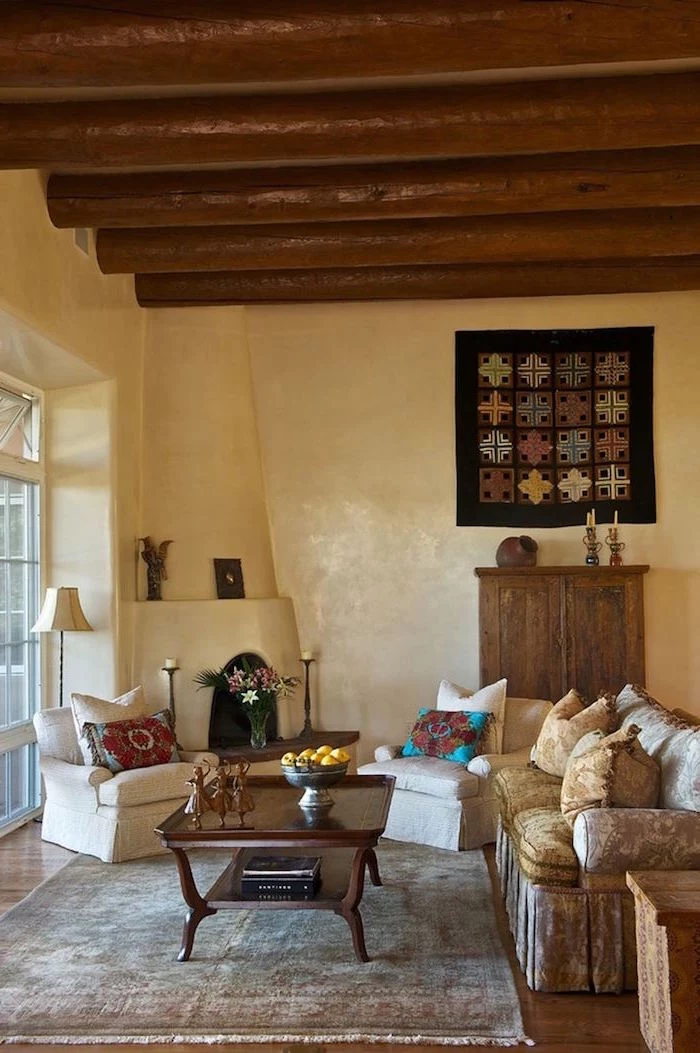
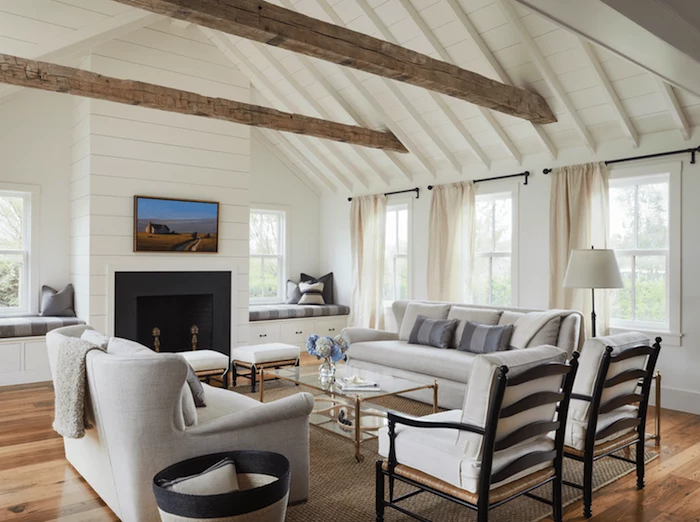
Tired of shiplap but still want wall texture?
Explore vertical v-groove or beadboard paneling. V-groove offers clean, modern lines that draw the eye upward, making ceilings feel taller. Beadboard provides a more traditional, charming cottage feel. Both can be painted the same color as the walls (like Benjamin Moore’s ‘White Dove’) for subtle texture, or in a contrasting soft gray for a gentle feature wall.
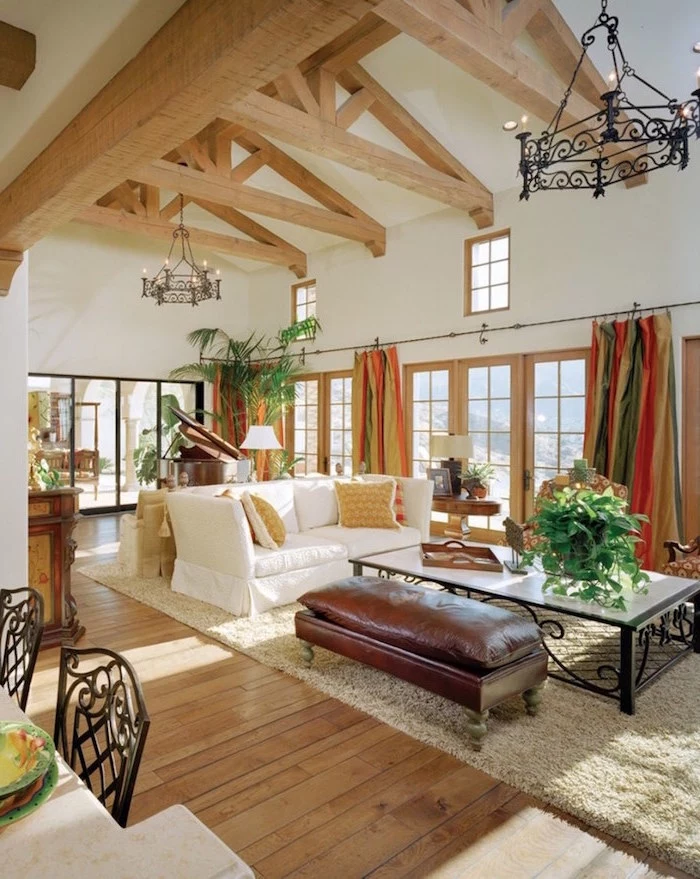

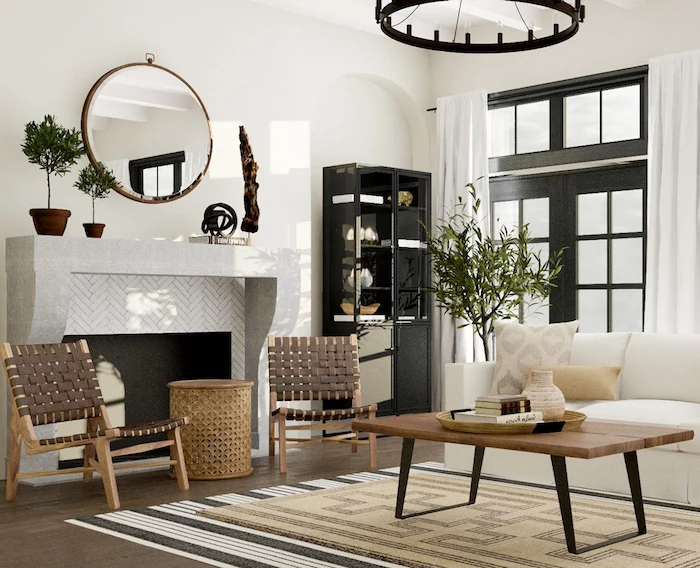
Slipcovered Sofa: Offers a relaxed, casual vibe. Look for durable, machine-washable fabrics like cotton canvas or linen blends. Brands like Pottery Barn or Sixpenny excel here. Perfect for families.
Leather Sofa: Adds a touch of rugged sophistication and ages beautifully. A cognac or caramel leather Chesterfield from a brand like Article can anchor the entire room.
Both work, but the choice defines the room’s formality level.
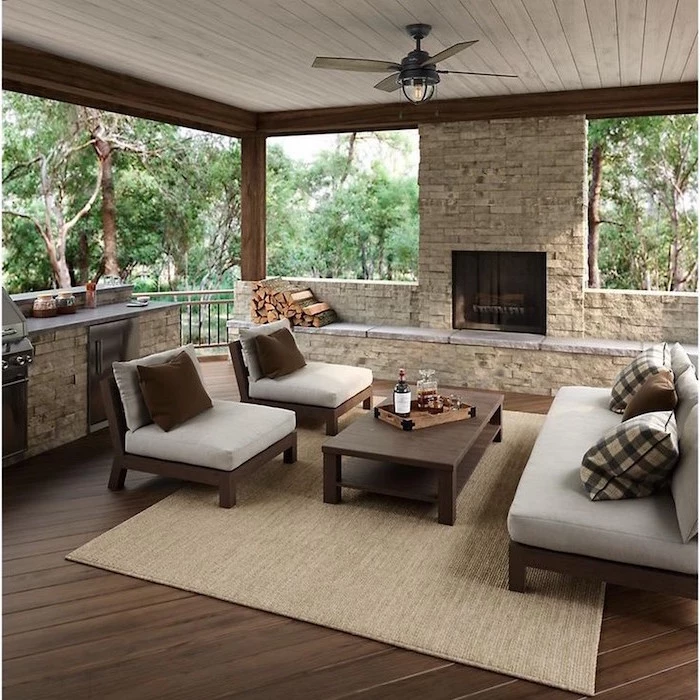
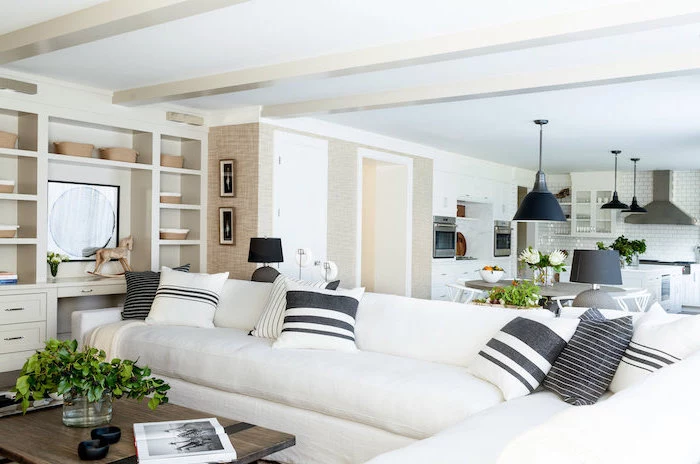
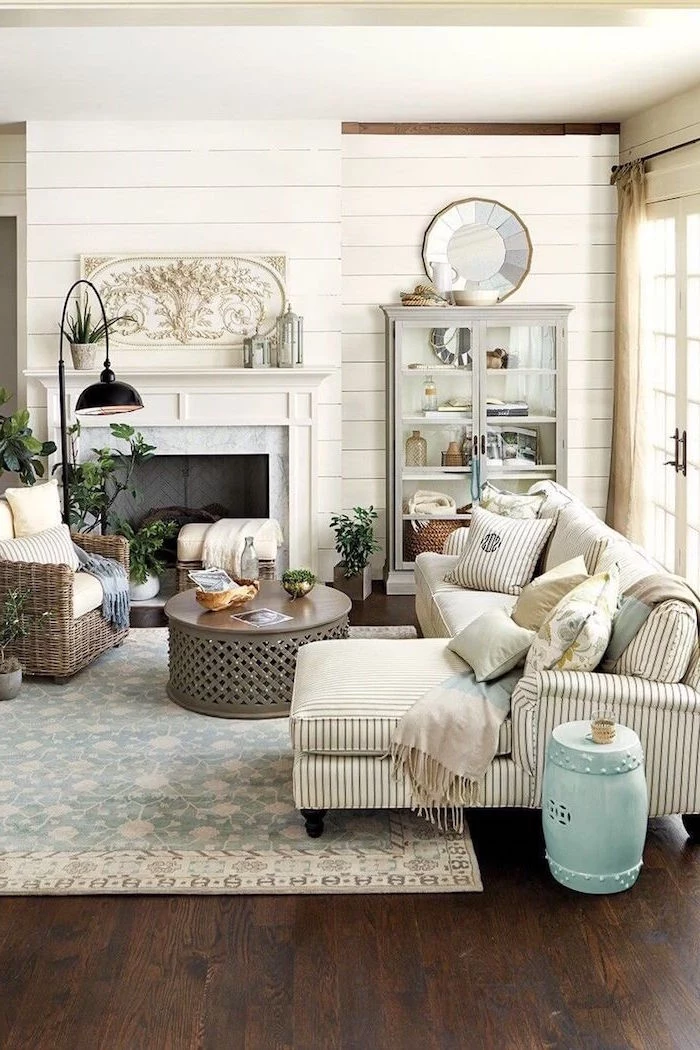
Reclaimed wood can be over 40% stronger and more durable than new ‘virgin’ wood because it often comes from old-growth trees.
This isn’t just about rustic looks; it’s about character and quality. Using reclaimed wood for a mantel, floating shelves, or even a coffee table brings a genuine story into your home. Each knot, nail hole, and saw mark is a piece of history that can’t be replicated with new, artificially distressed lumber.
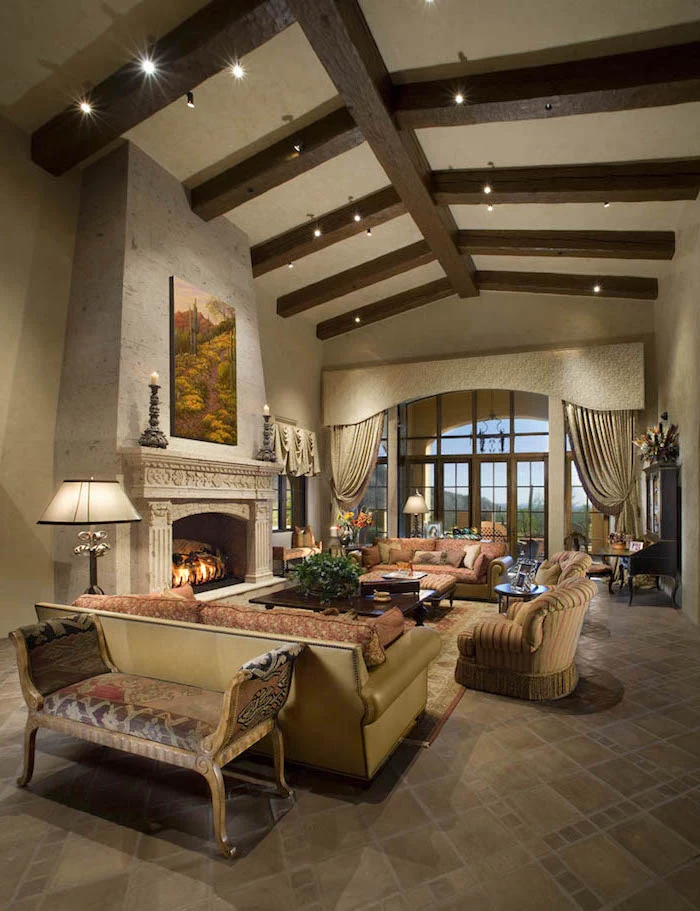
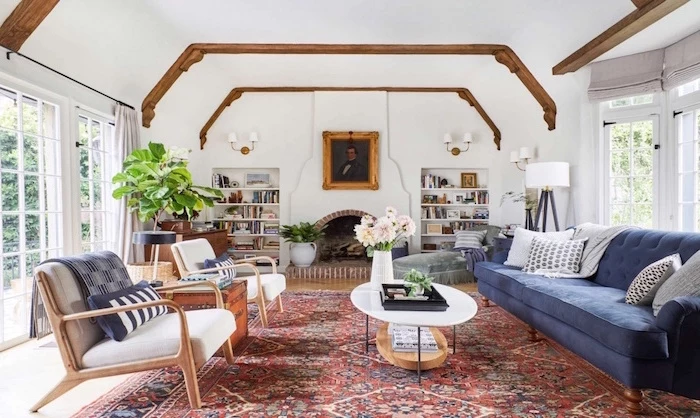
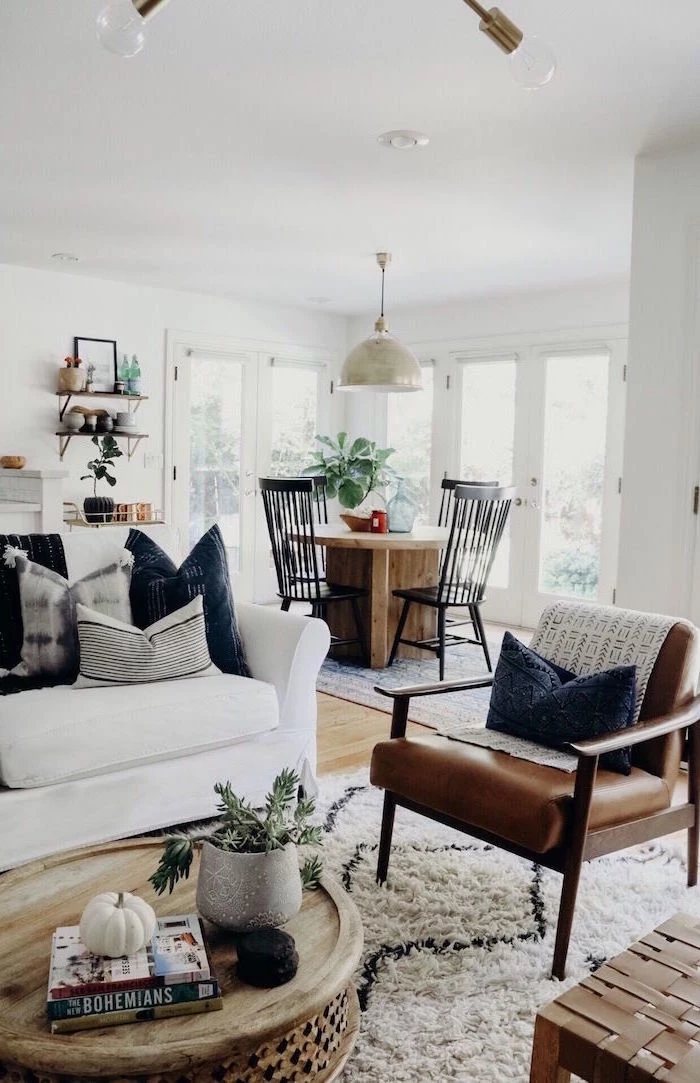
- Creates a balanced, comfortable, and uncluttered feel.
- Prevents the room from looking like a dollhouse or being overwhelmed.
- Allows for proper traffic flow around key pieces.
The secret? Respecting the scale. A common mistake is using furniture that’s too small. Modern farmhouse style favors substantial, comfortable pieces—think a deep sofa and oversized armchairs, not delicate, leggy settees.
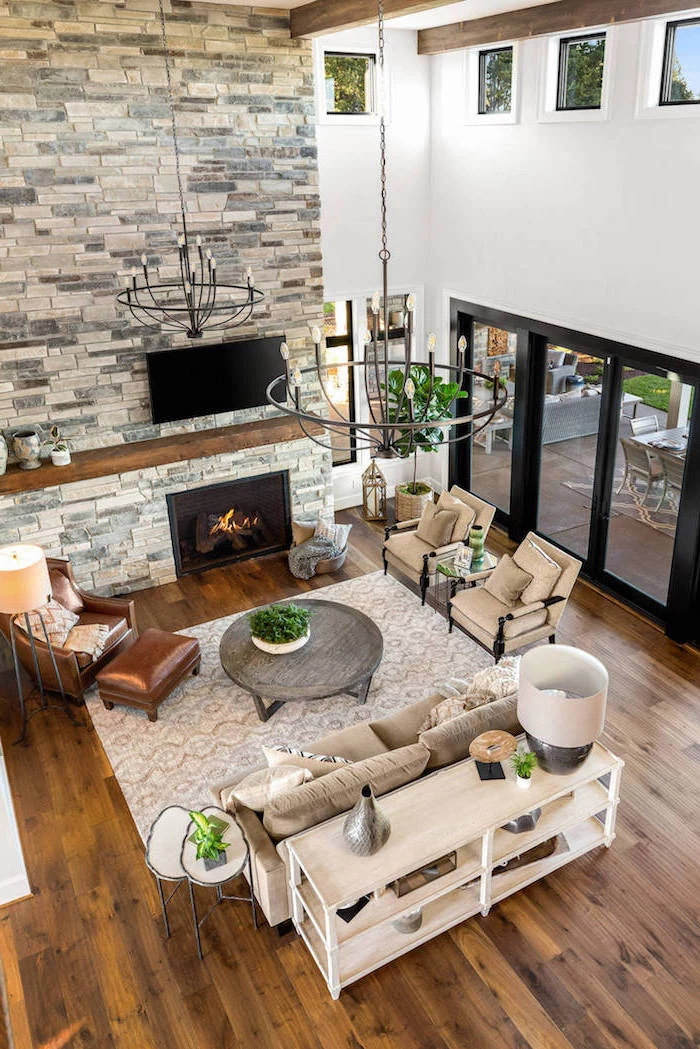
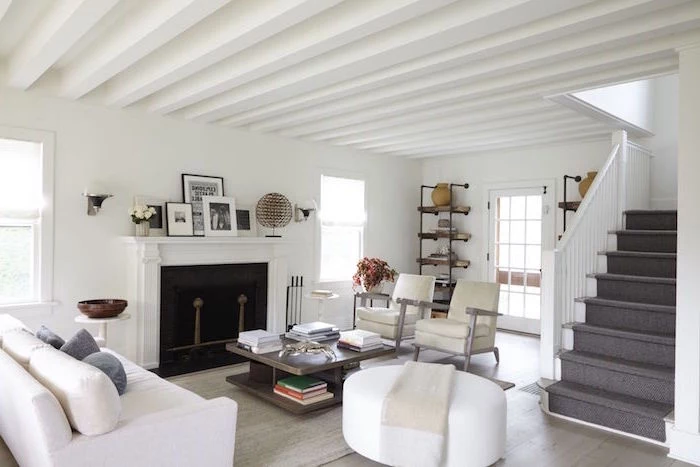
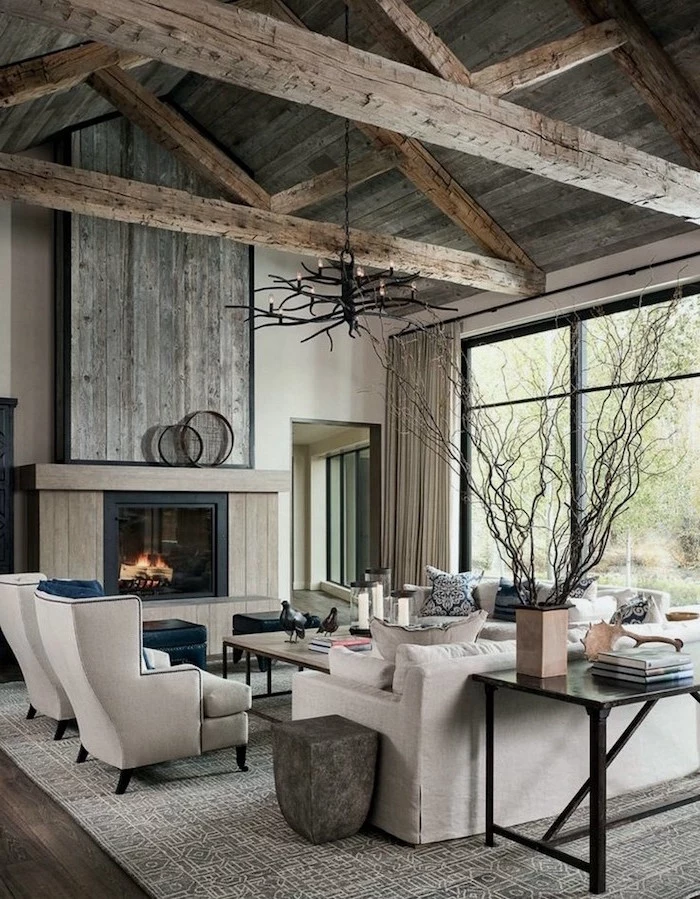
Bring the outdoors in, but keep it natural. Instead of overly styled bouquets, opt for foraged branches in a simple glass vase, a pot of herbs on the windowsill, or a fiddle-leaf fig tree in a rustic ceramic pot. The greenery should feel like it was just gathered from the garden, not arranged by a florist.
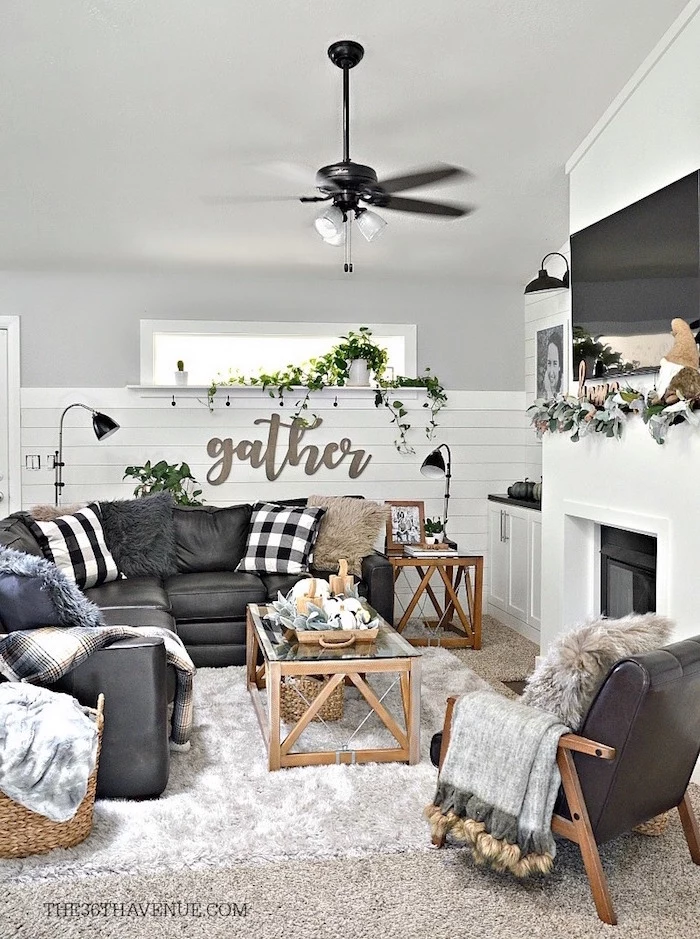
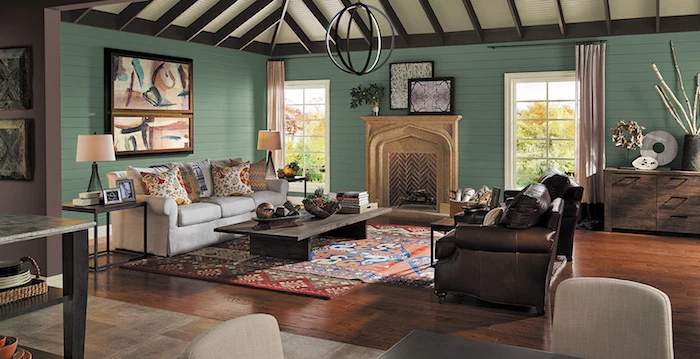
Anchor your space with the right foundation: A natural fiber rug, like jute or sisal, is a hallmark of the style. They add incredible texture and durability. For a softer feel underfoot, layer a smaller, vintage-style patterned rug or a simple wool rug on top. This adds depth and defines the seating area.
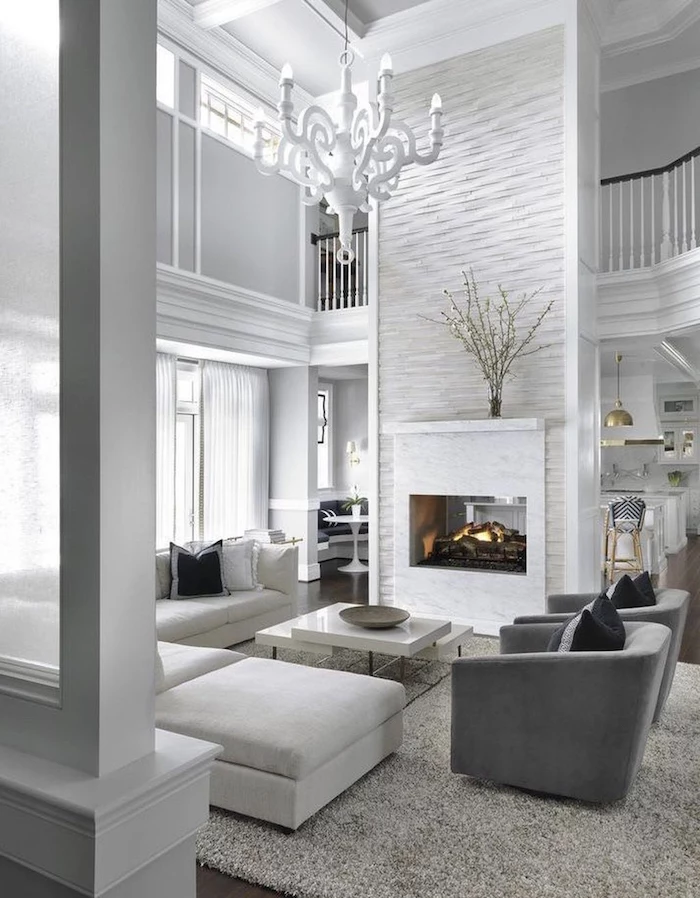
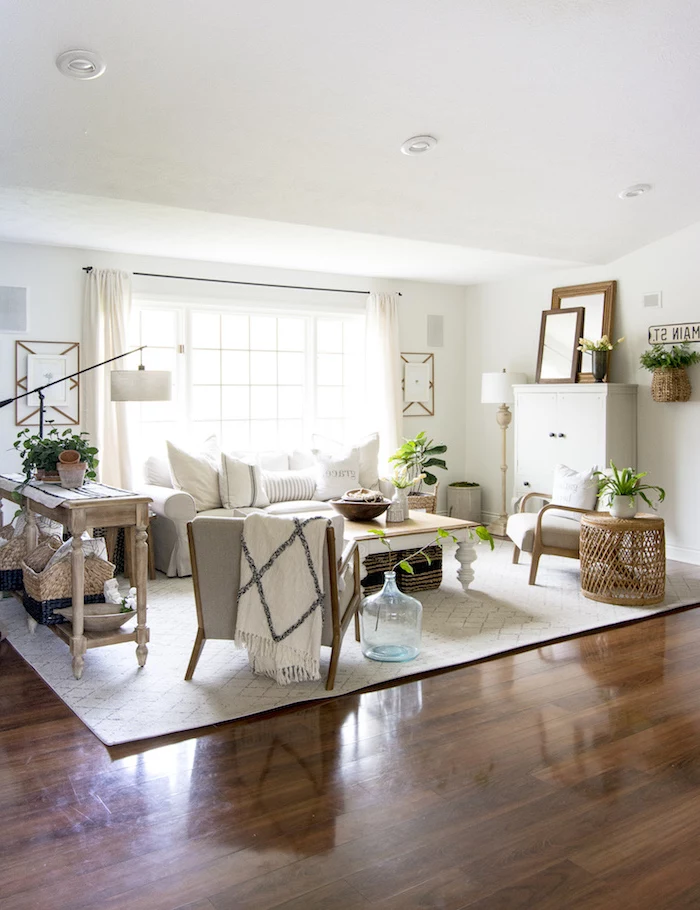
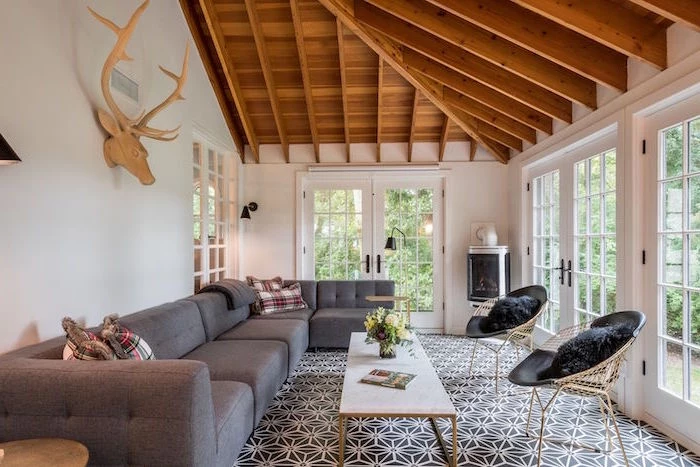
Lighting is the jewelry of the room. A mix of sources is key for creating a warm, inviting atmosphere.
- Ambient: A large, simple wagon wheel or lantern-style chandelier in matte black or aged iron.
- Task: Industrial-style floor lamps for reading nooks or articulating sconces on the wall.
- Accent: Small, ceramic-base table lamps to create cozy pools of light.
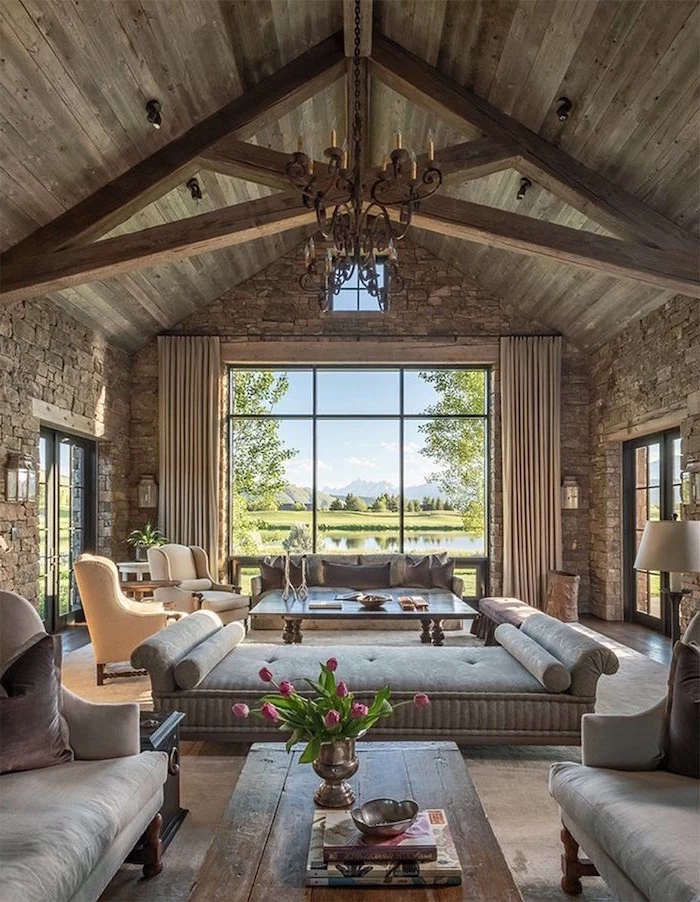
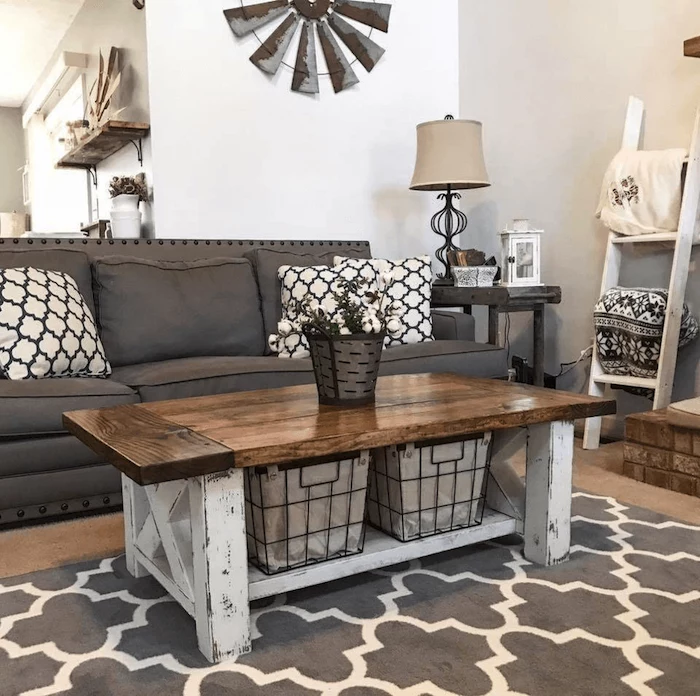

‘The best rooms have something to say about the people who live in them.’ – David Hicks.
While white is the classic base, don’t be afraid to inject personality with color. A moody, deep green (like Farrow & Ball’s ‘Studio Green’) on a single accent wall or on the lower half of a wall with wainscoting can add depth and a modern twist without losing the farmhouse soul.
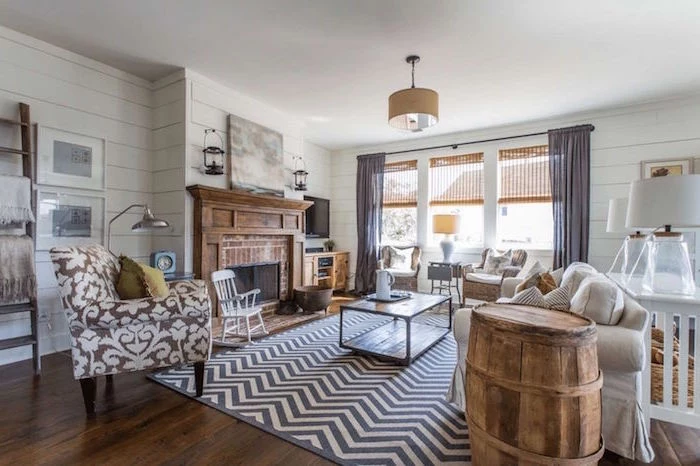
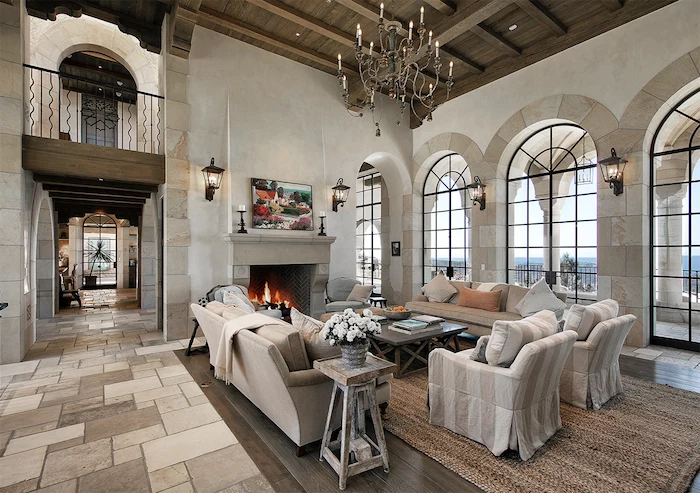
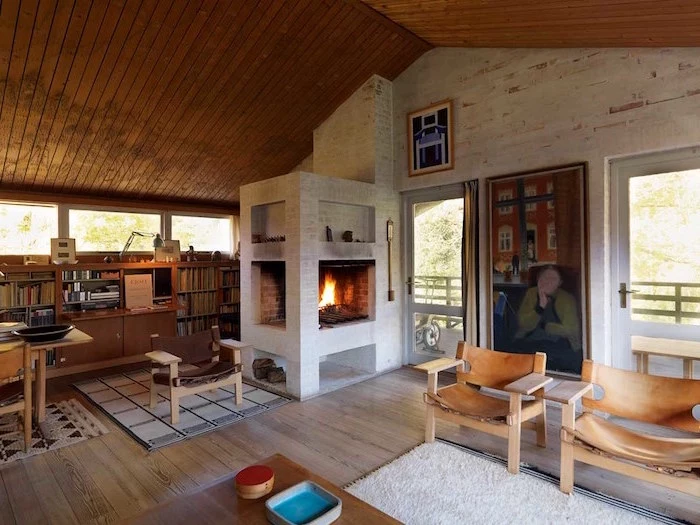
How do I get the look without exposed beams?
You can mimic the architectural interest without a major renovation. Faux wood beams, made from lightweight high-density polyurethane, have become incredibly realistic. Brands like Ekena Millwork offer convincing textures and finishes. Installed on a flat ceiling, they instantly add the character and vertical interest that define the style, at a fraction of the cost and complexity of real structural beams.
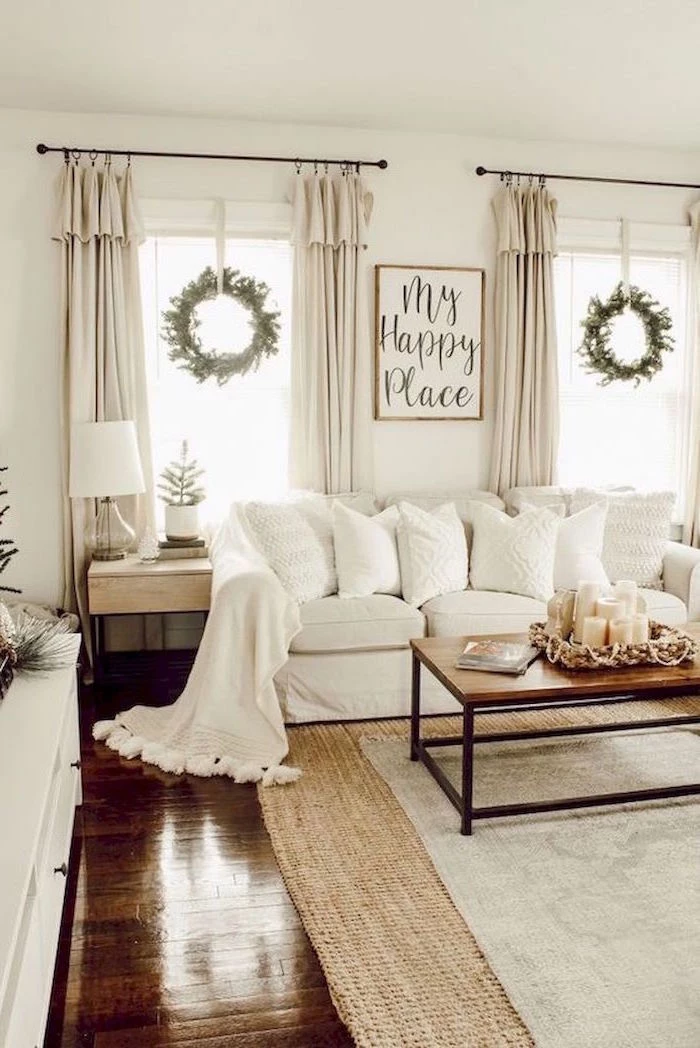
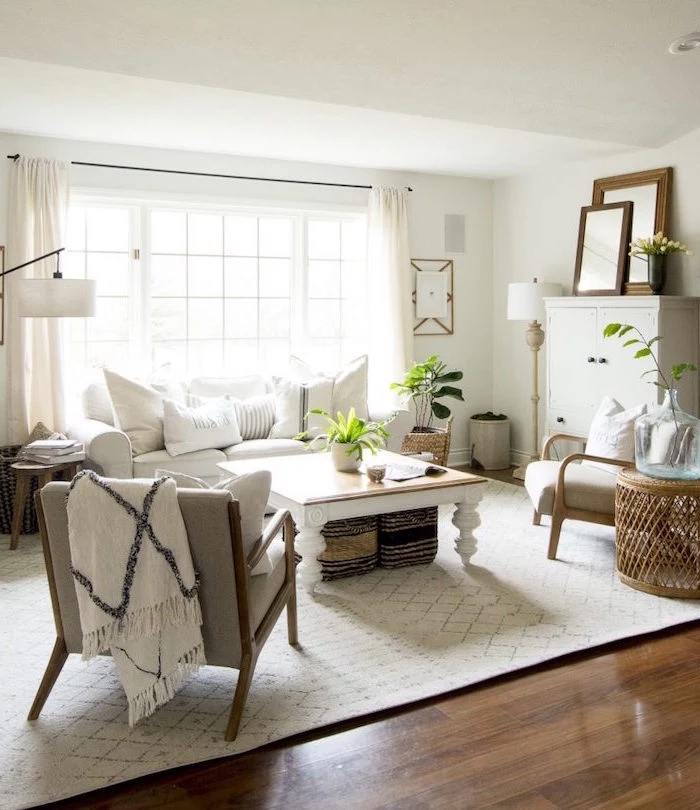
The Rustic Trunk: A vintage or reclaimed wood trunk offers character and hidden storage for blankets or magazines. It adds a sense of history.
The Modern Slab: A simple, blocky coffee table made of solid wood or even a light-toned concrete provides a clean, contemporary contrast to plush sofas.
Choose the trunk for a more traditional feel, the slab for a modern edge.

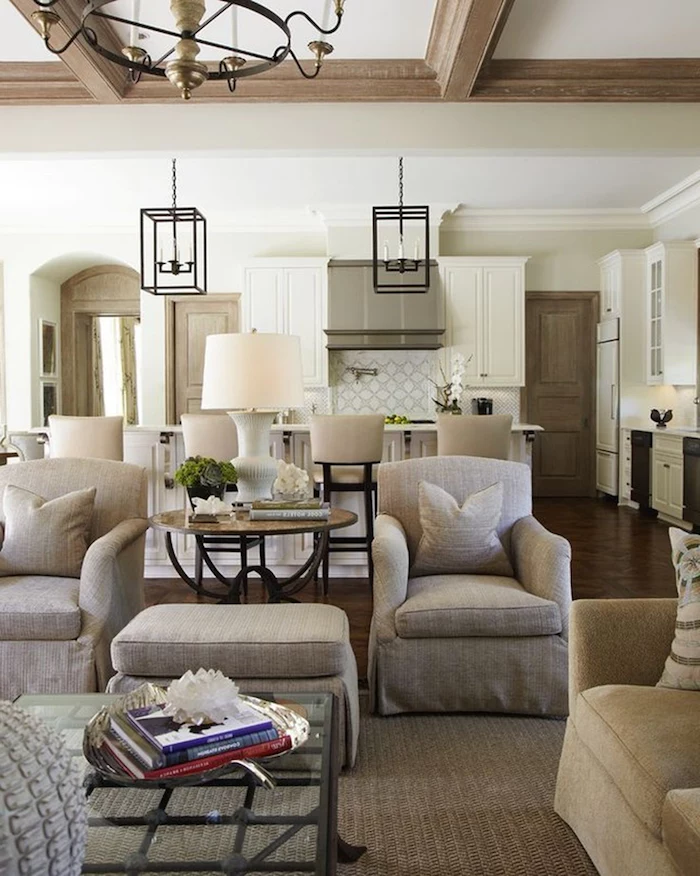
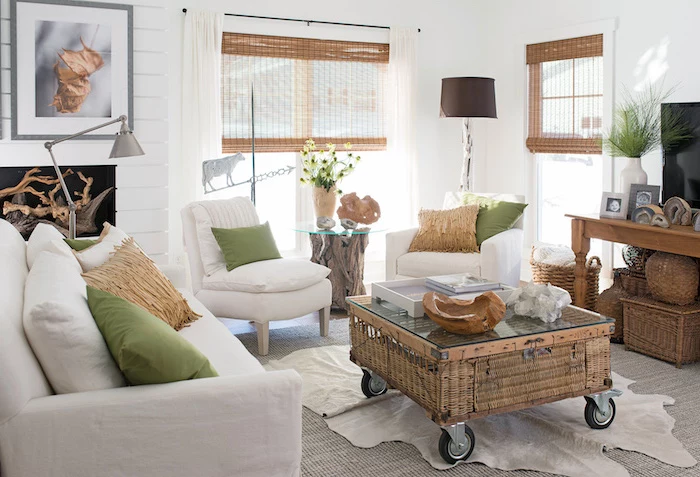
Open shelving is a farmhouse staple, but the key to making it modern is curation. Resist the urge to fill every inch. Mix practical items (like a stack of white everyday dishes) with personal objects (a small piece of art, a vintage tin, a plant). Use a consistent color palette—neutrals, wood tones, and a single accent color—to keep it from looking chaotic.
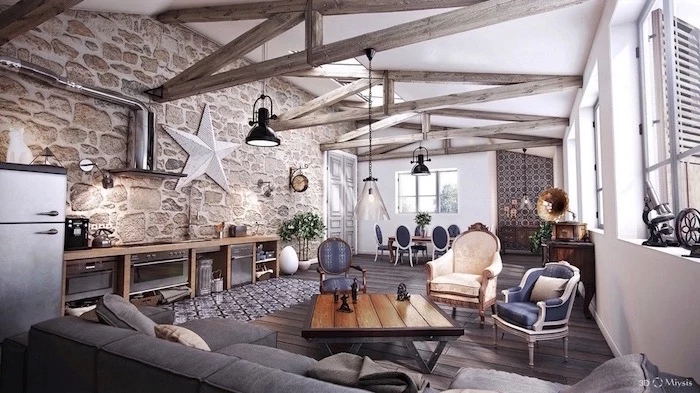
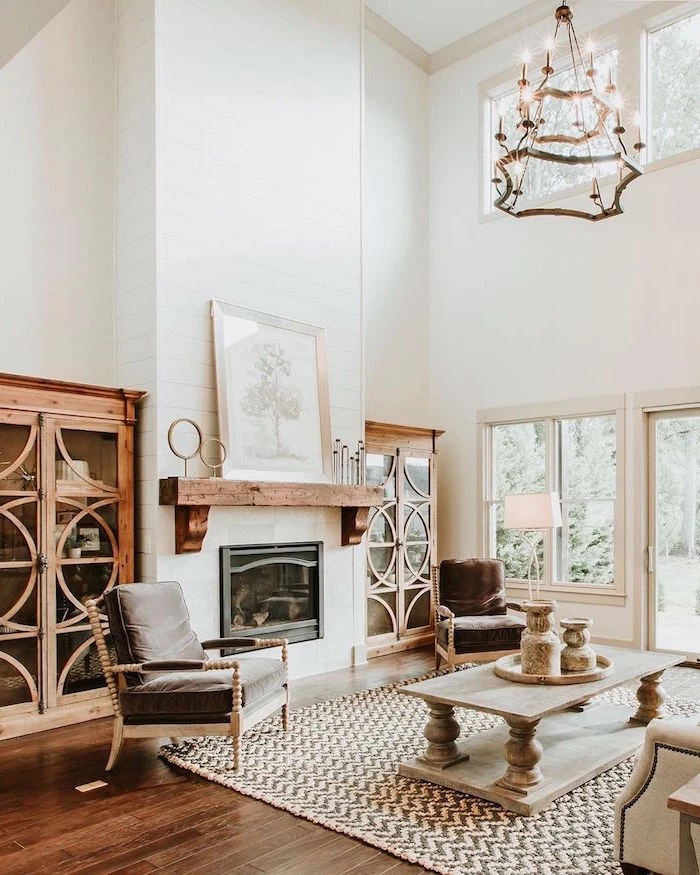
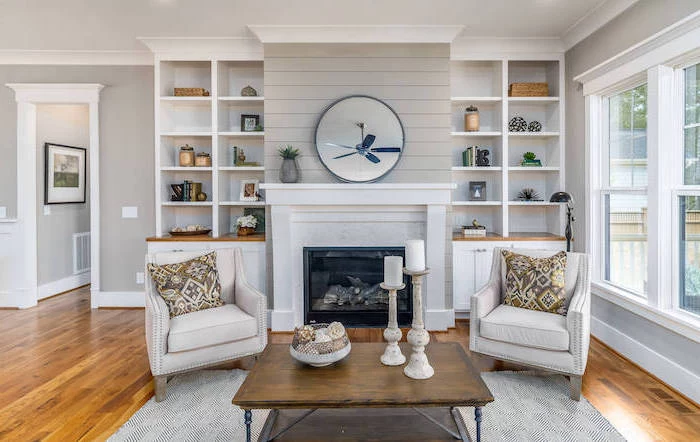
- Opt for large-scale, simple pieces over busy gallery walls.
- Choose subjects that evoke a sense of calm: landscape paintings, botanical prints, or abstract art with organic forms.
- Frames matter. Use simple, thin black metal or natural wood frames. Avoid ornate or gilded options.
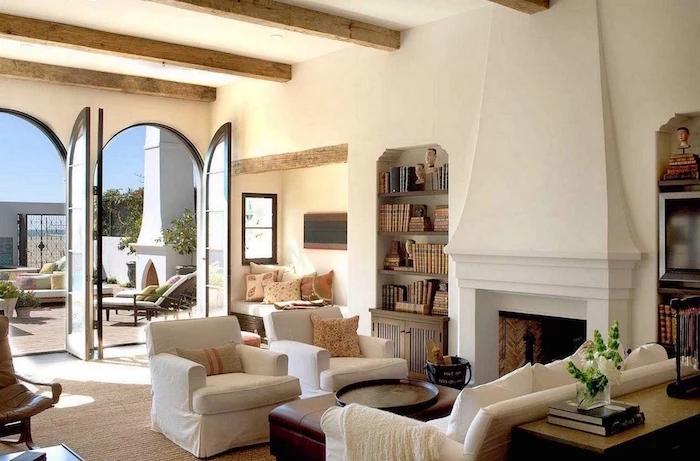
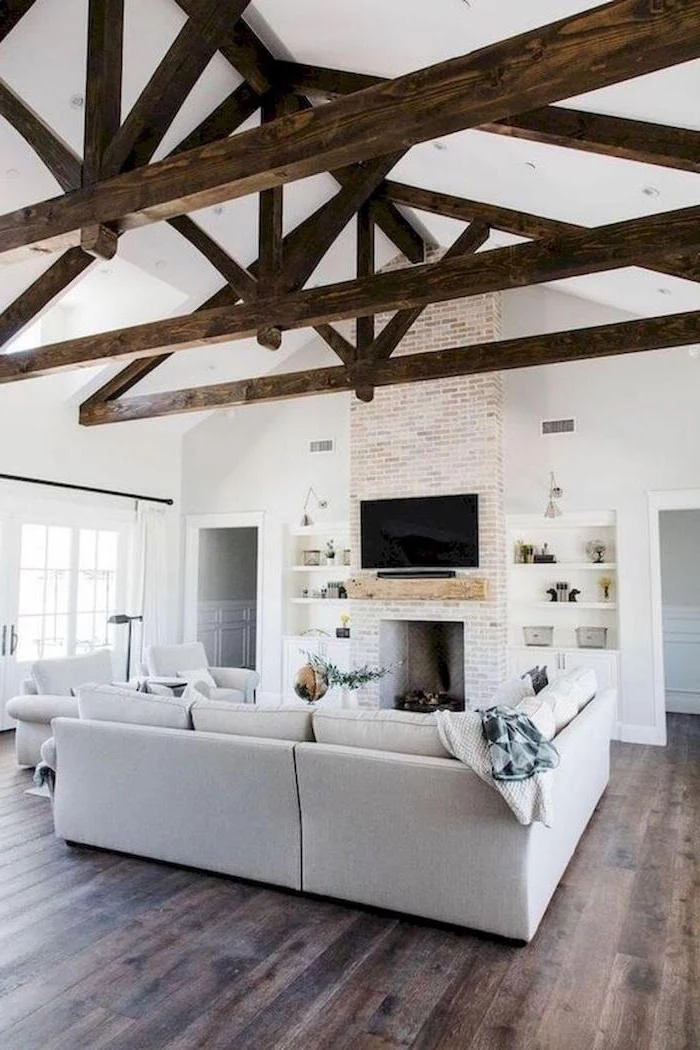
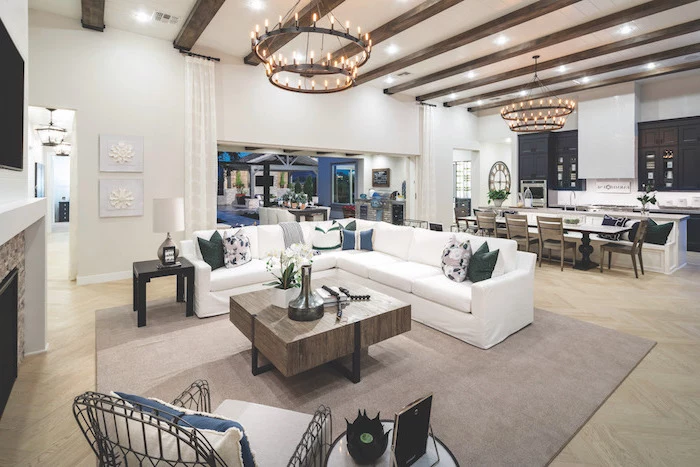
- Tells a personal story.
- Adds unique character that can’t be bought in a big-box store.
- Prevents the room from feeling like a sterile catalog showroom.
The trick? The perfect blend of vintage and new. Pair a sleek, modern sofa with a weathered antique side table you found at a flea market. The contrast is what creates a soulful, authentic space.
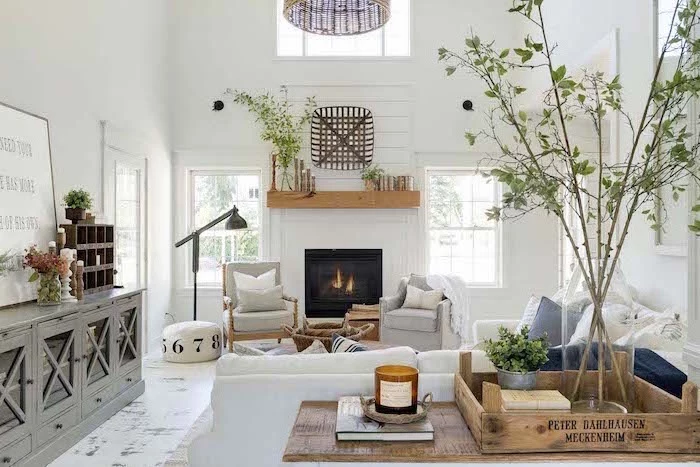
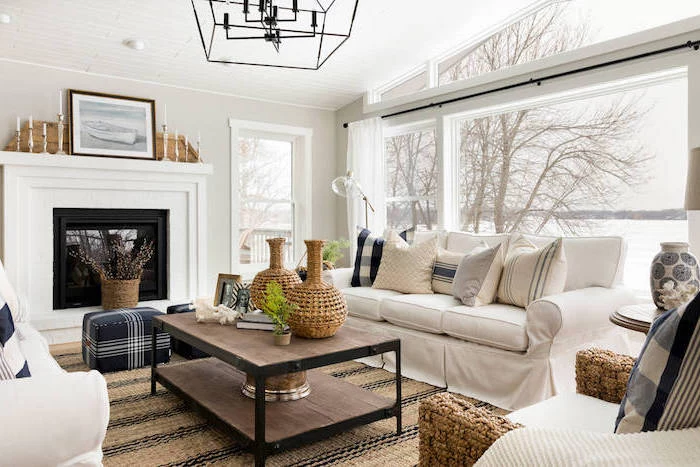
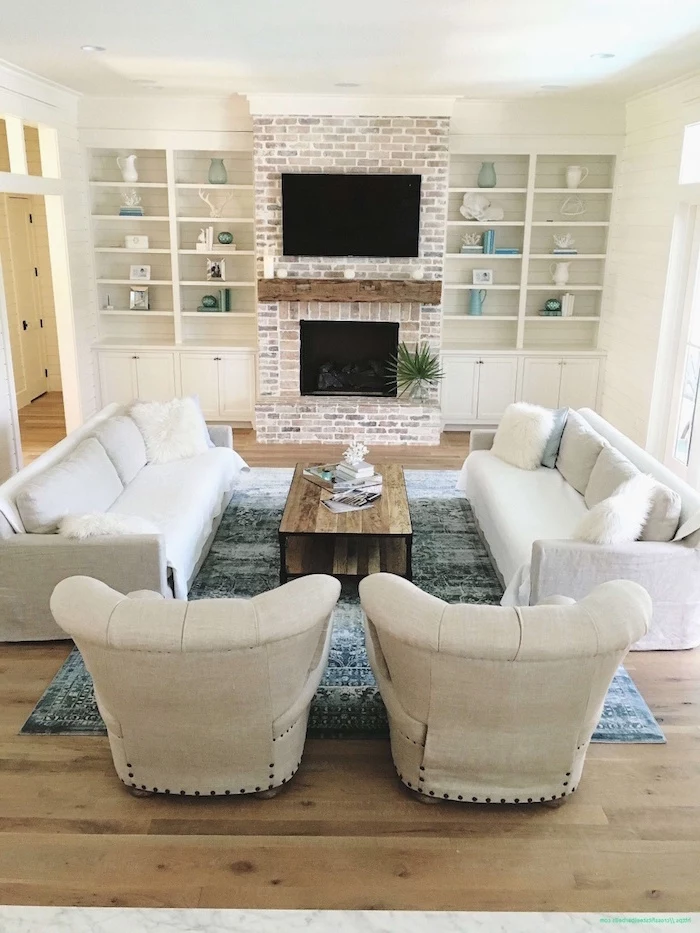
Avoid the ‘farmhouse sign’ overload: A room doesn’t need a sign that says ‘Gather’ to feel welcoming. Let the comfortable seating, warm lighting, and durable materials do the talking. True modern farmhouse style is about embodying a feeling, not displaying a label.
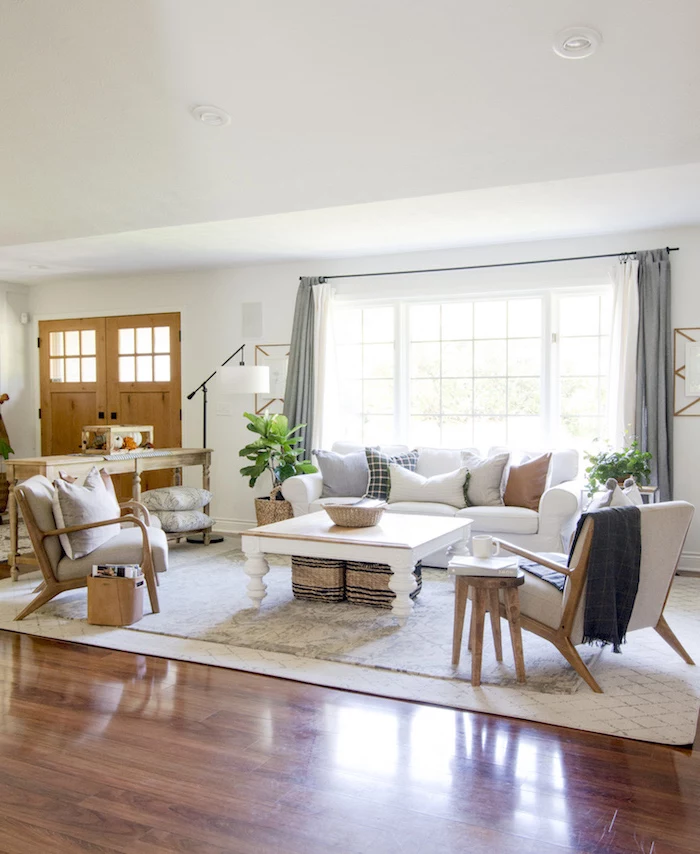
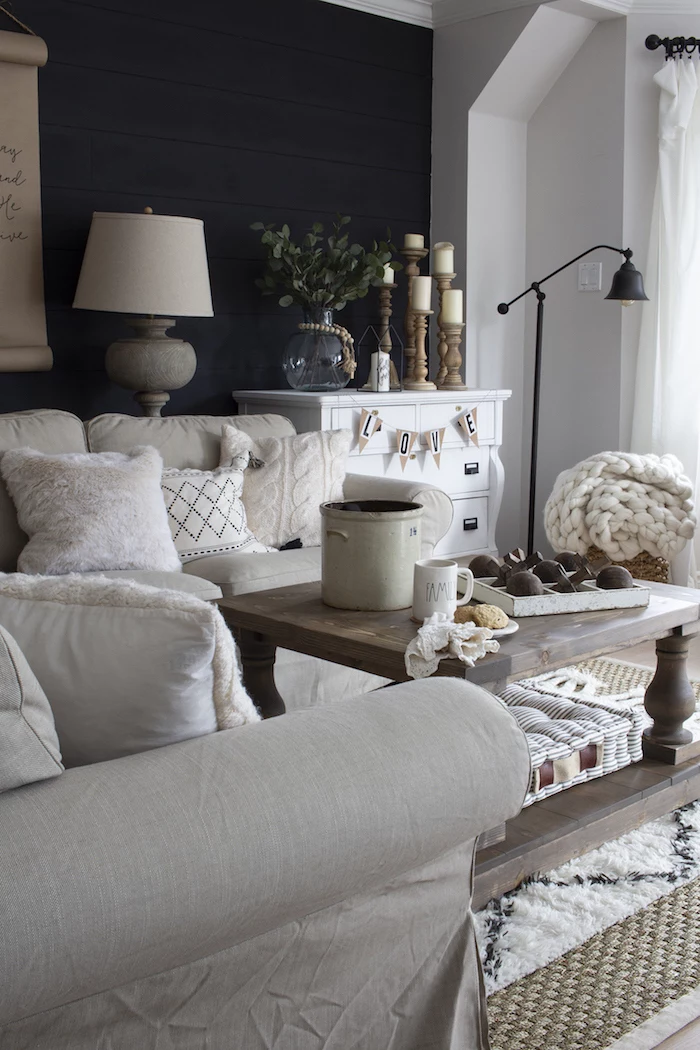
According to the National Wood Flooring Association, wide-plank floors (5 inches or wider) can make a room feel larger and more open.
This is why they are a cornerstone of the modern farmhouse aesthetic. They create fewer seams, resulting in a cleaner, less busy visual plane that enhances the sense of space. Opt for hardwoods like oak or hickory with a natural, low-sheen matte finish to hide dust and wear, reinforcing the style’s practical roots.
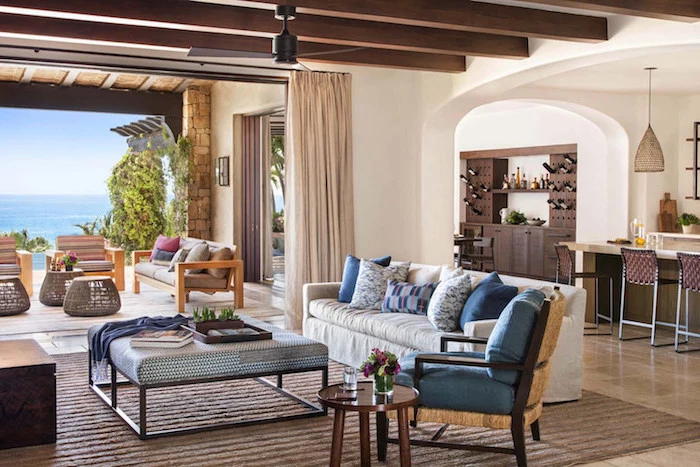
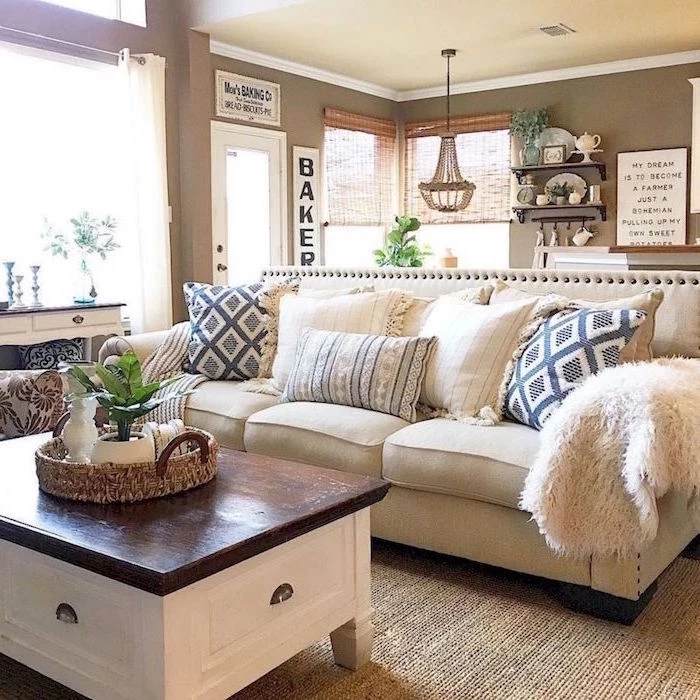
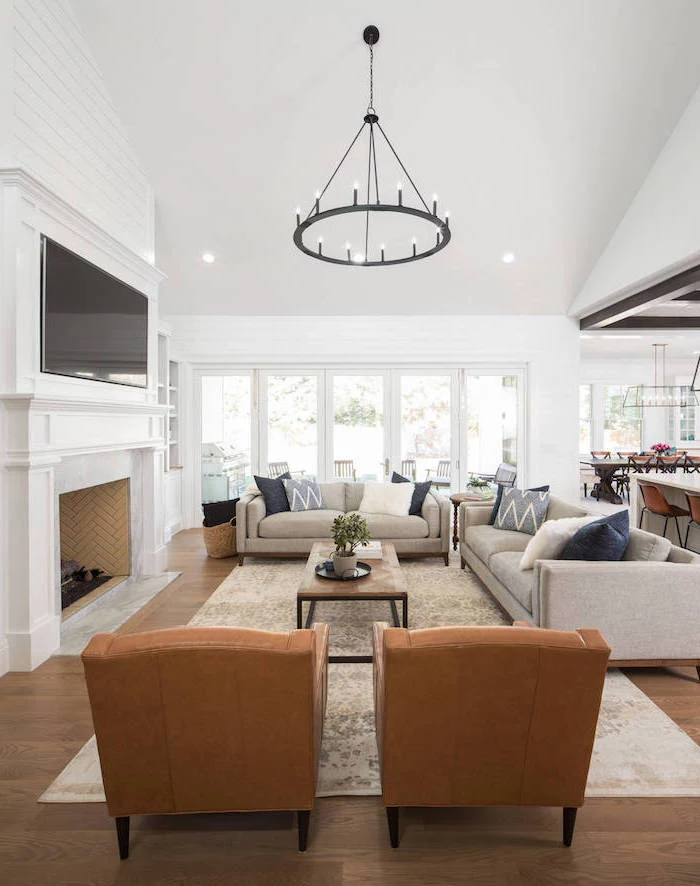
Windsor Chair: Its spindled back offers a classic, almost sculptural silhouette. A black-painted Windsor chair provides a strong graphic contrast against white walls.
Upholstered Armchair: A plush, deep-seated armchair in a neutral fabric like oatmeal or grey offers pure comfort and invites you to curl up with a book.
Use a Windsor for architectural interest, and an upholstered chair for a cozy nook.
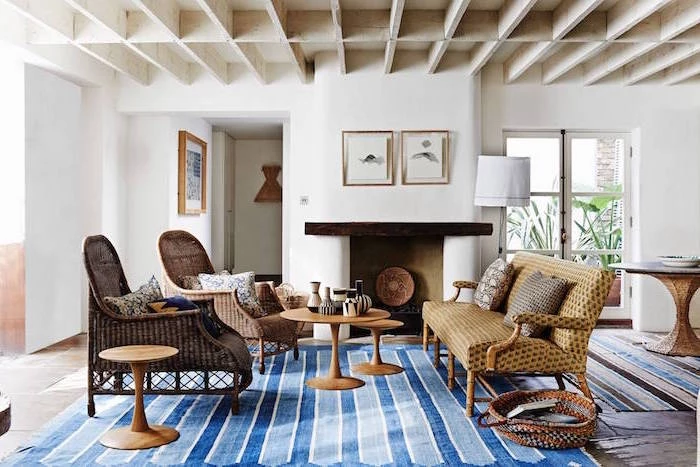
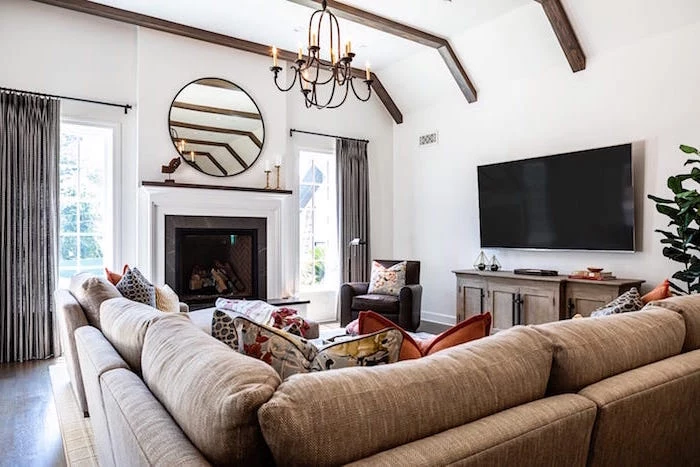
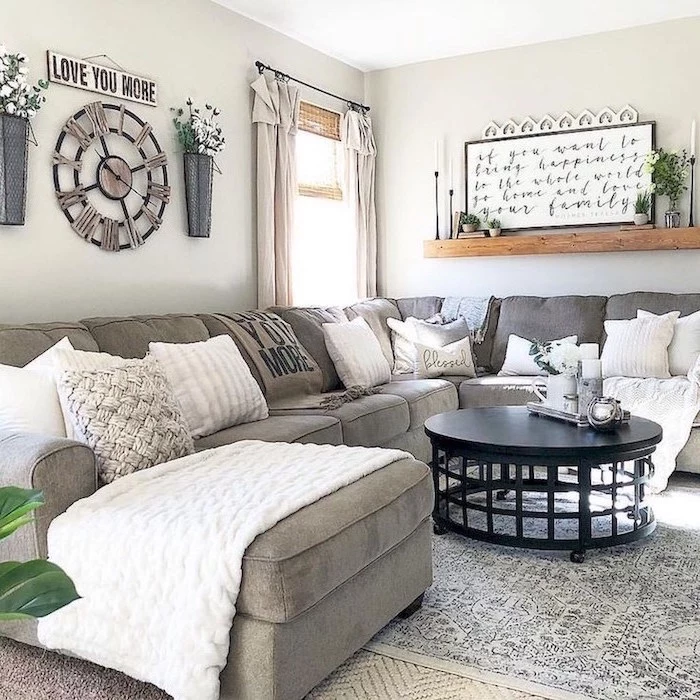
‘Buy less, choose well, make it last.’ – Vivienne Westwood.
This fashion mantra applies perfectly to modern farmhouse decor. Invest in a solid wood dining table that will last for generations, or a well-made sofa, rather than cycling through trendy, disposable furniture. This approach honors the resourcefulness and durability inherent in the original farmhouse ethos.
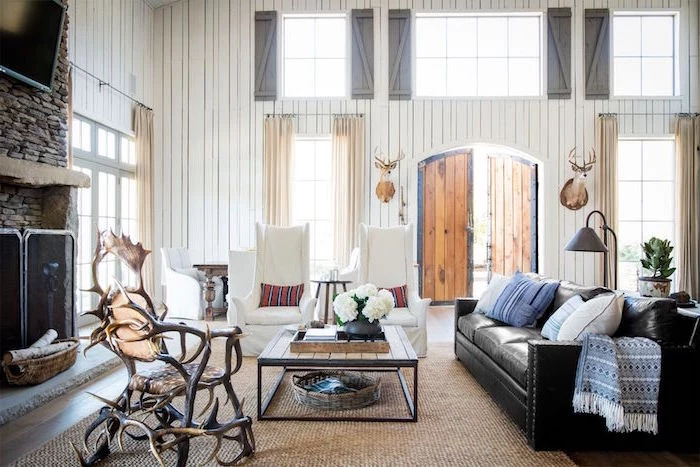
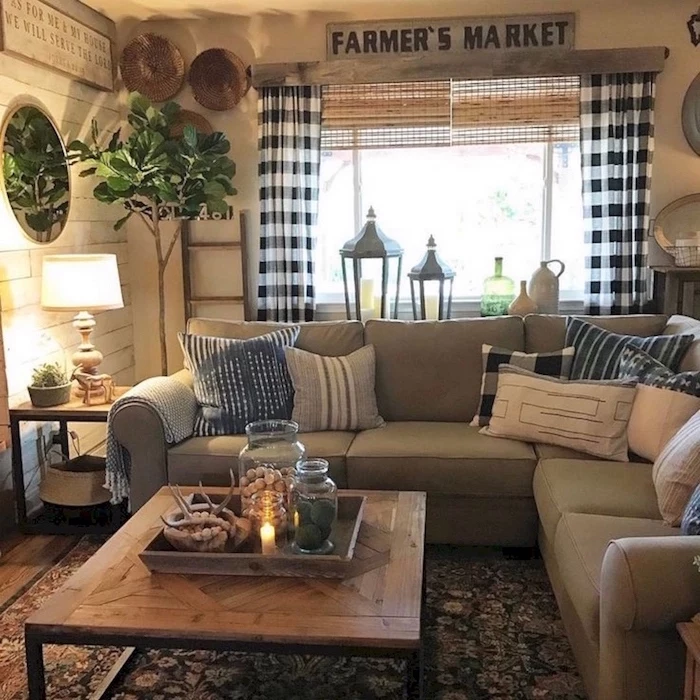
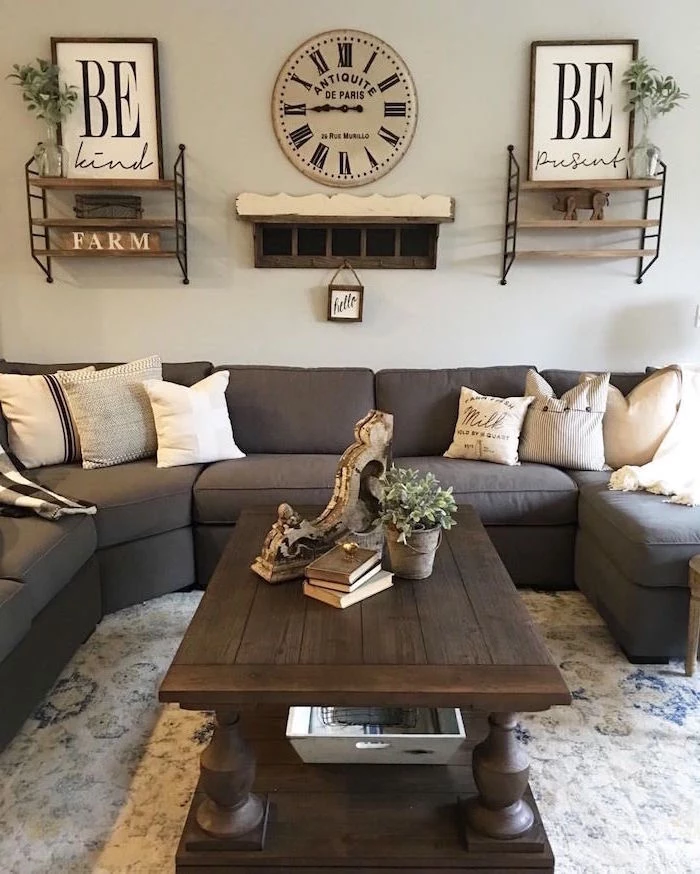
Is the sliding barn door officially ‘out’?
Not necessarily, but its application has matured. Instead of a standard ‘X’ brace door, consider more refined versions. A door painted a deep, moody color, a simple plank-style door with sleek, minimalist hardware, or one with frosted glass panels can feel fresh and modern. Use it where it makes sense functionally—like for a pantry or office—not just as a decorative element.
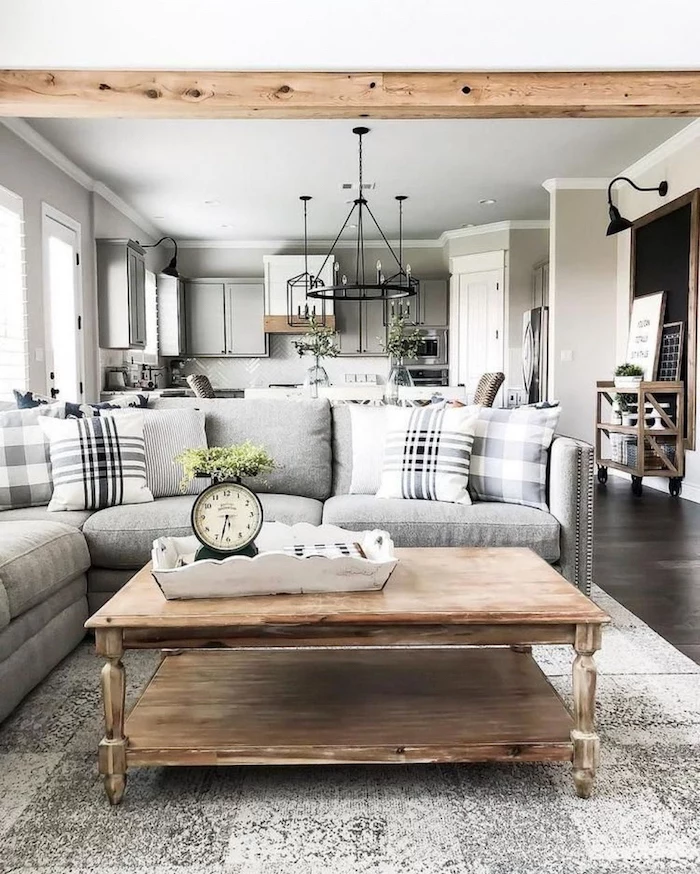
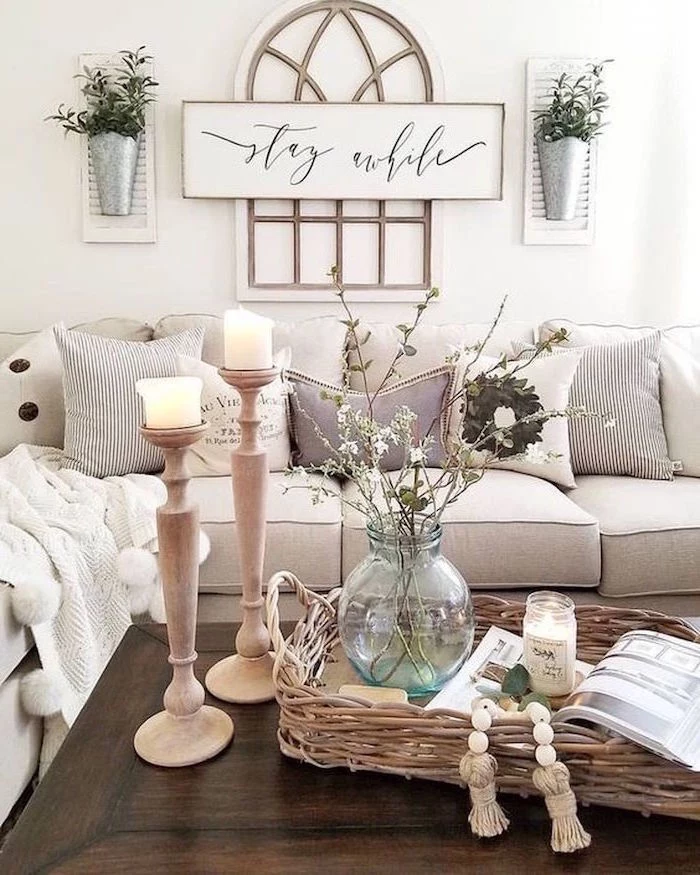
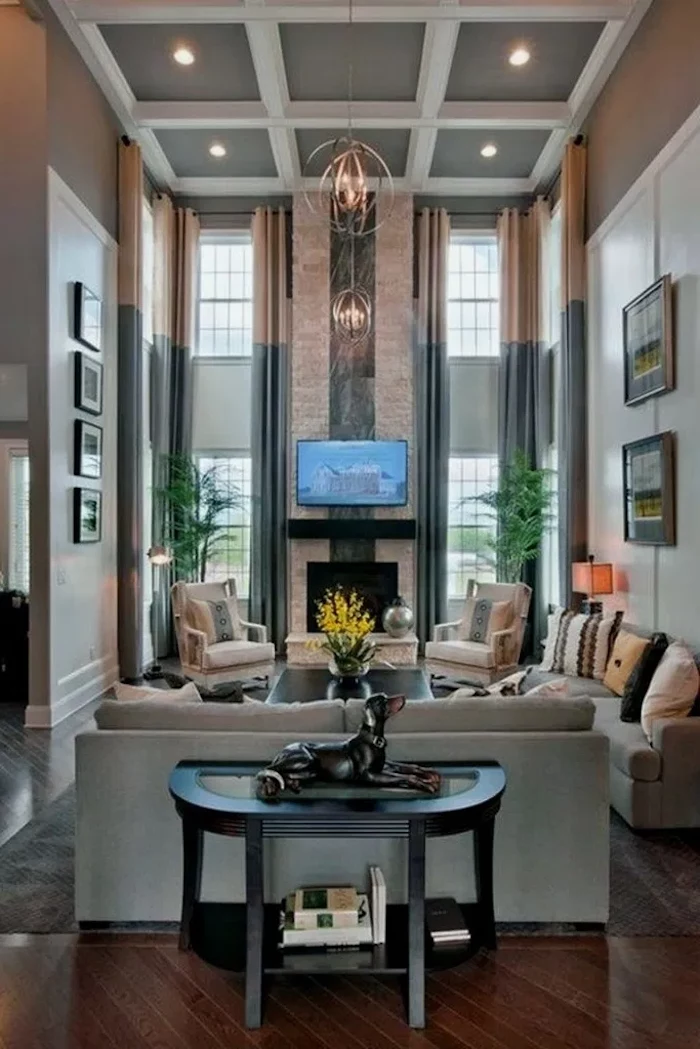
Beyond the fireplace, create smaller moments of ‘hygge’ (the Danish concept of coziness) throughout the room.
- Establish a dedicated reading corner with a comfortable chair, a good lamp, and a small table for a cup of tea.
- Use baskets made of wicker or seagrass to stylishly hold extra blankets and pillows, keeping comfort within arm’s reach.
- Incorporate candles with natural scents like pine, cedar, or vanilla to engage the sense of smell.
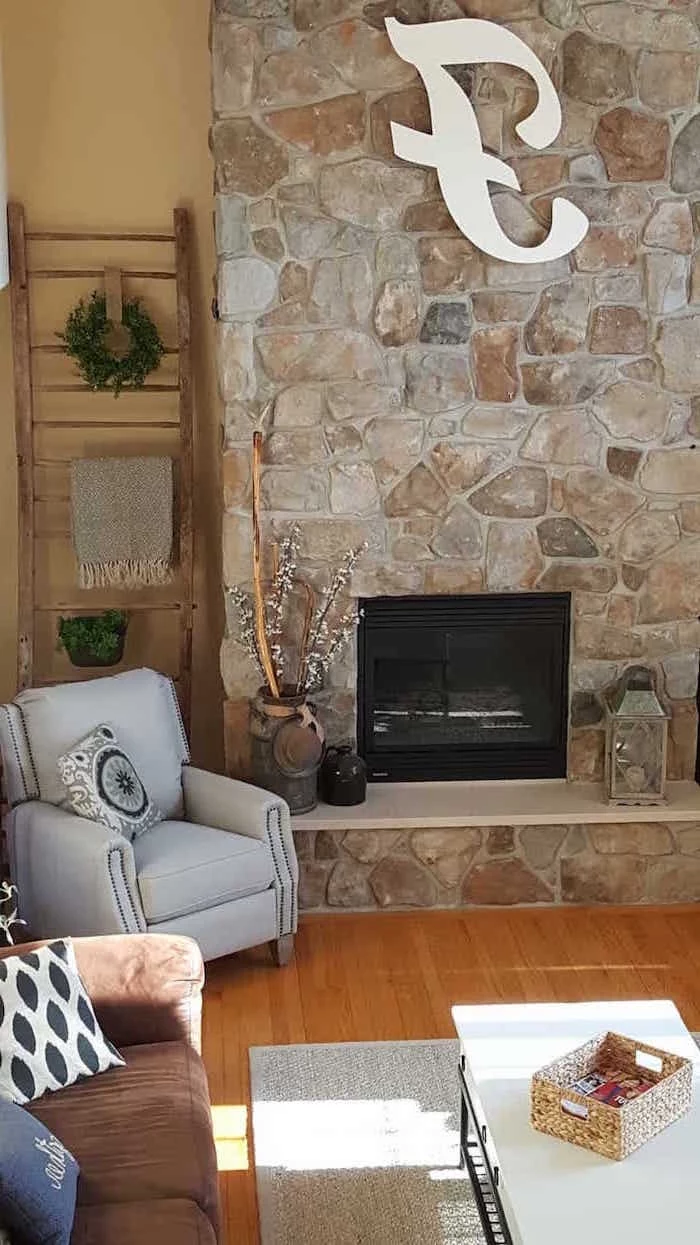
Don’t forget the ceiling—the ‘fifth wall.’ While white is a safe choice, adding texture can elevate the entire room. If exposed beams aren’t an option, consider applying simple wood paneling (like v-groove) or even a textured, paintable wallpaper between faux beams. It adds a layer of architectural detail that feels custom and intentional, completing the authentic farmhouse envelope.

